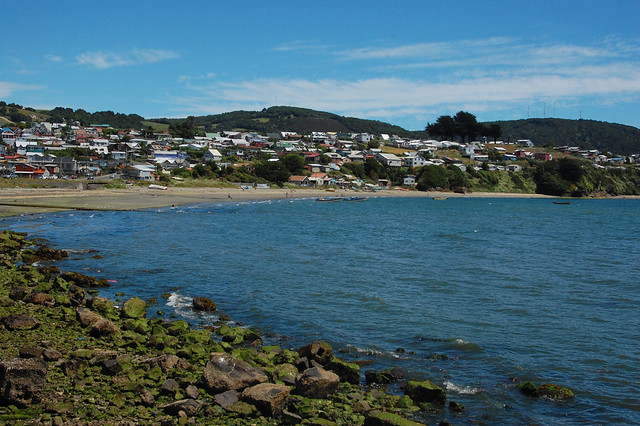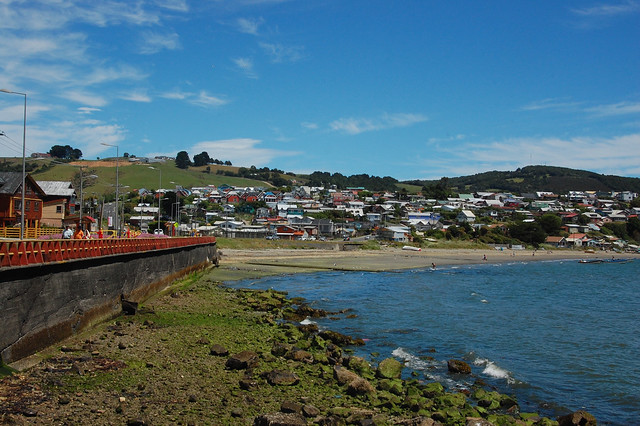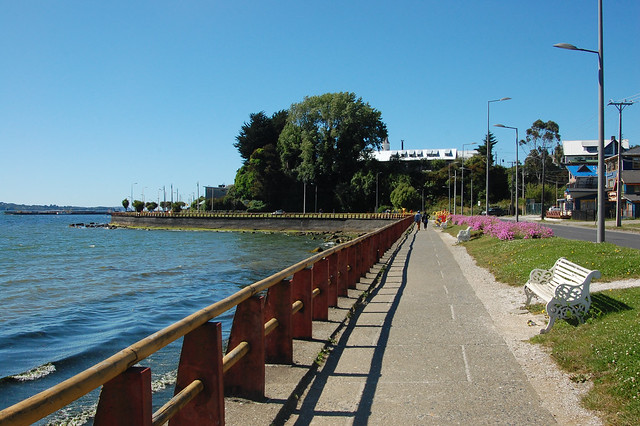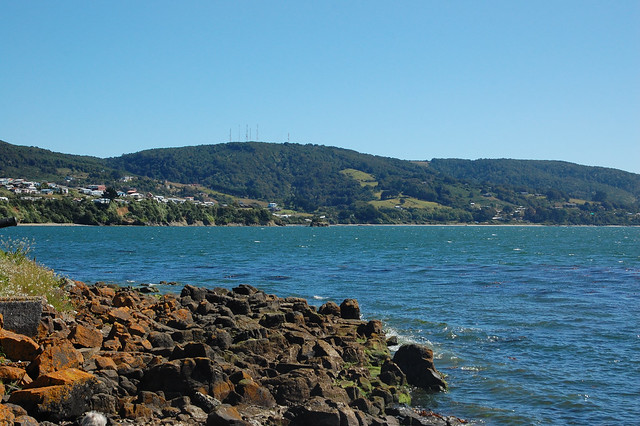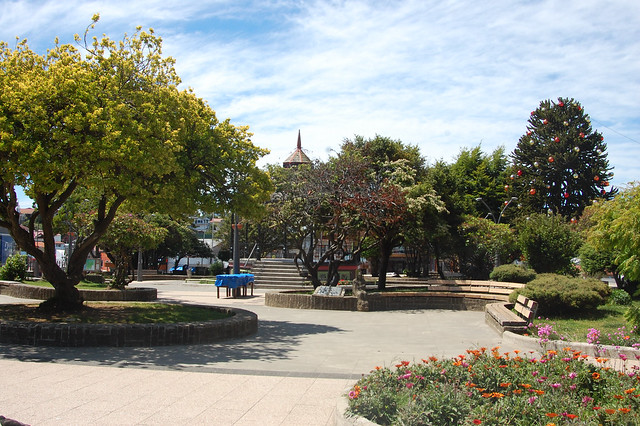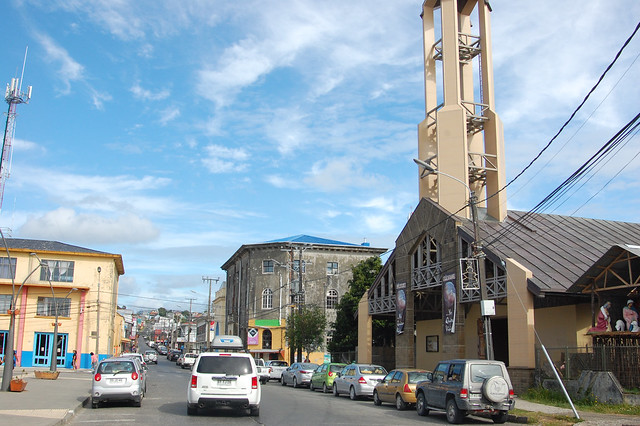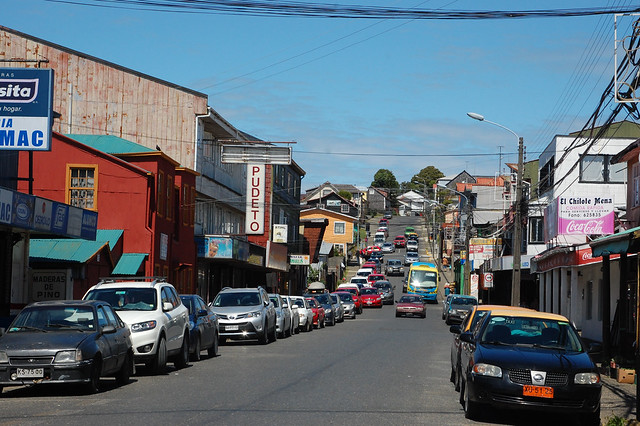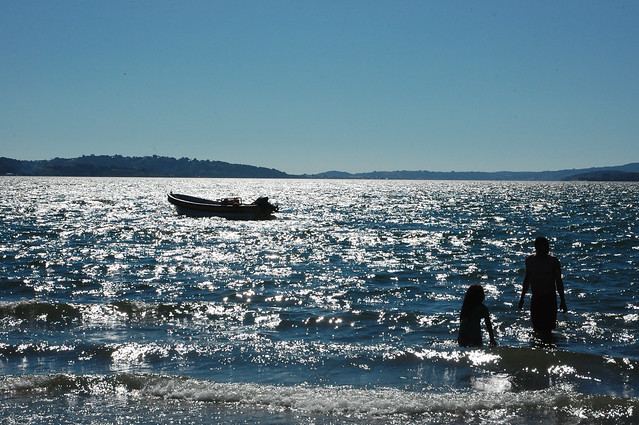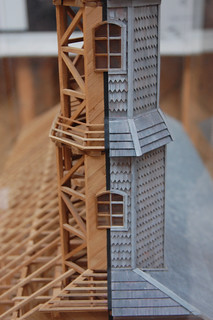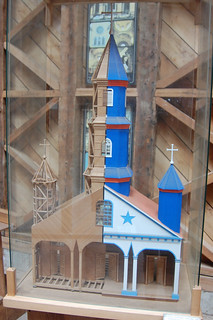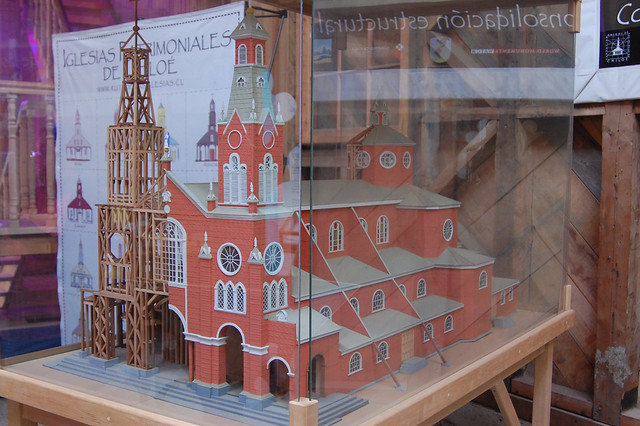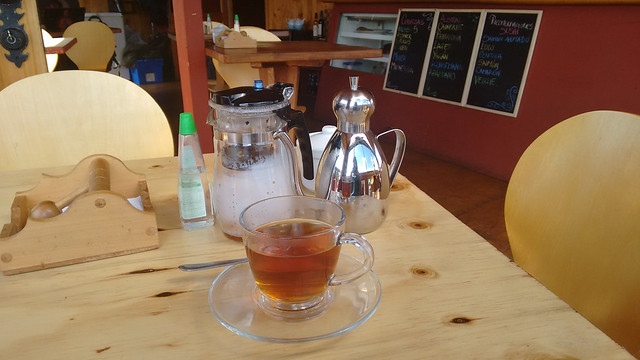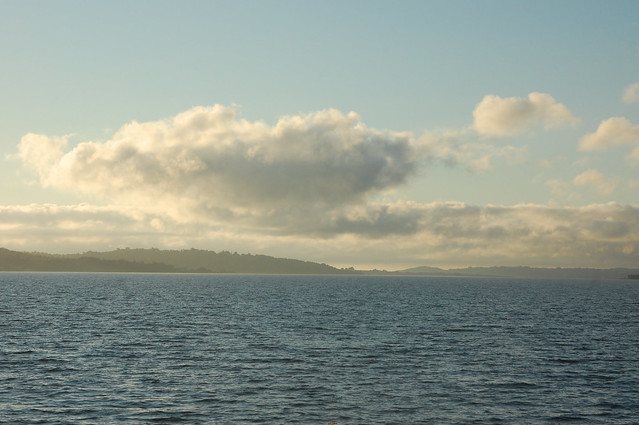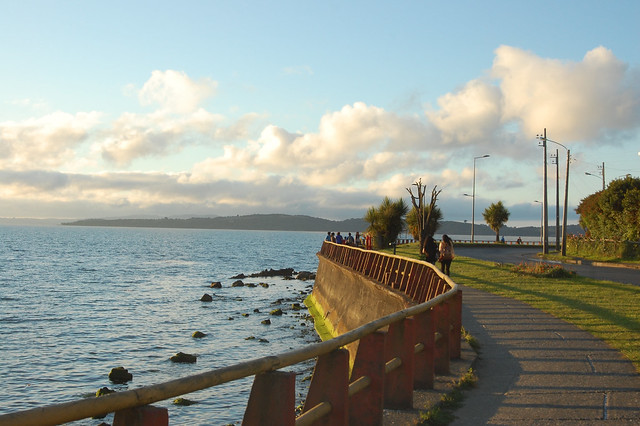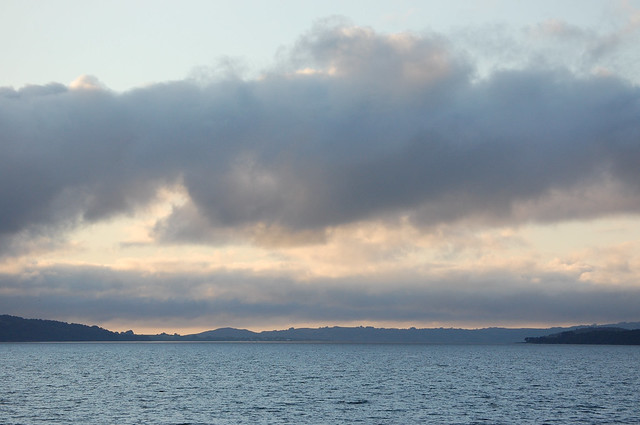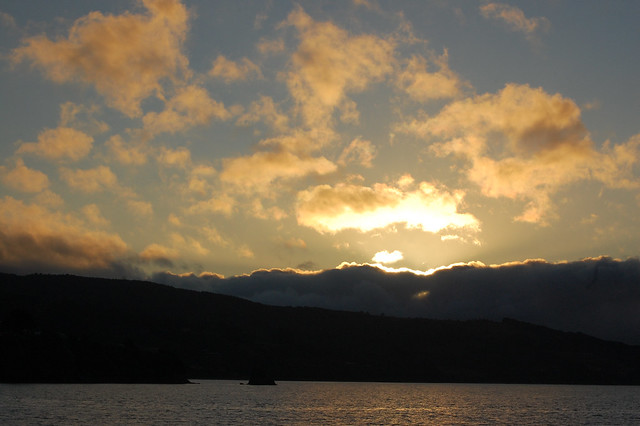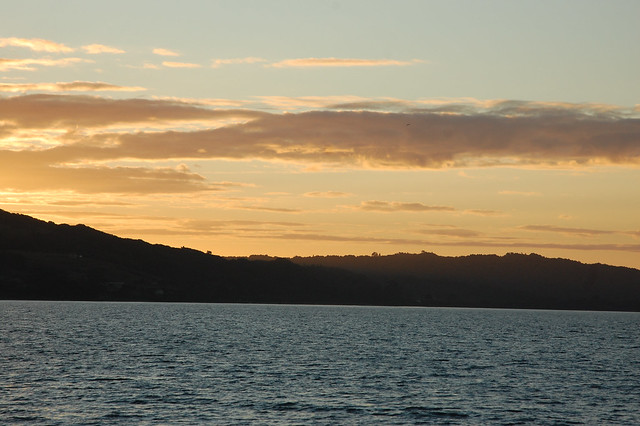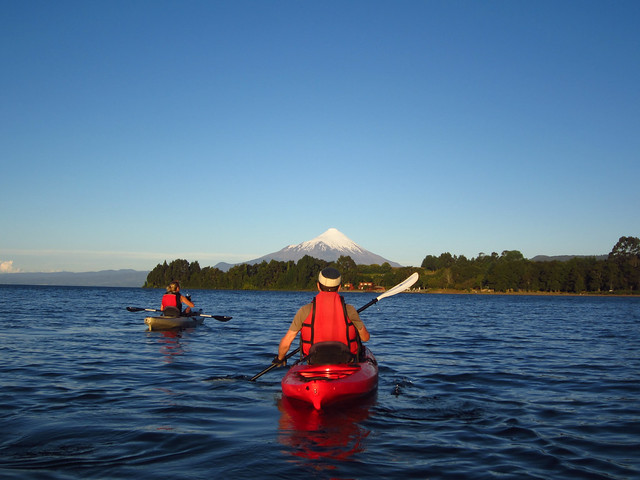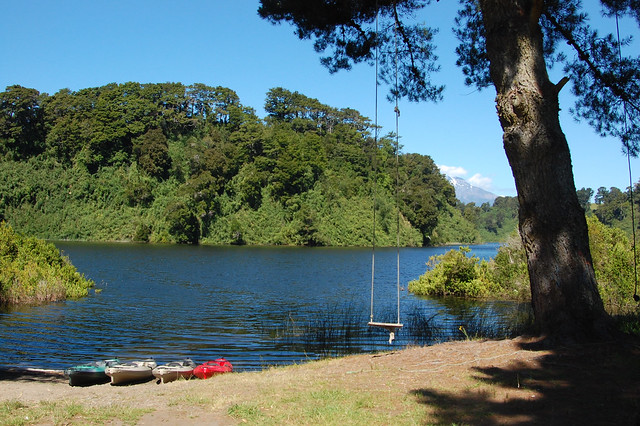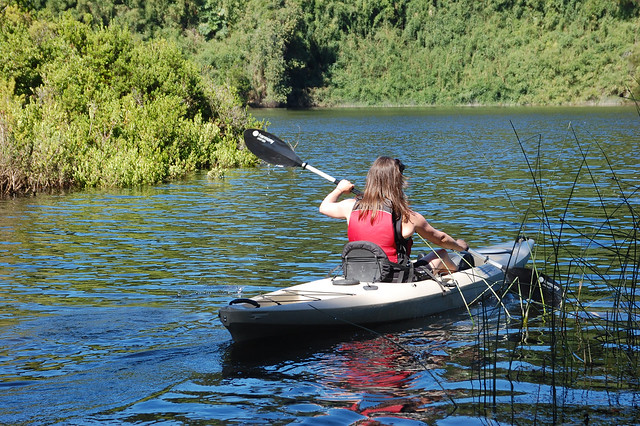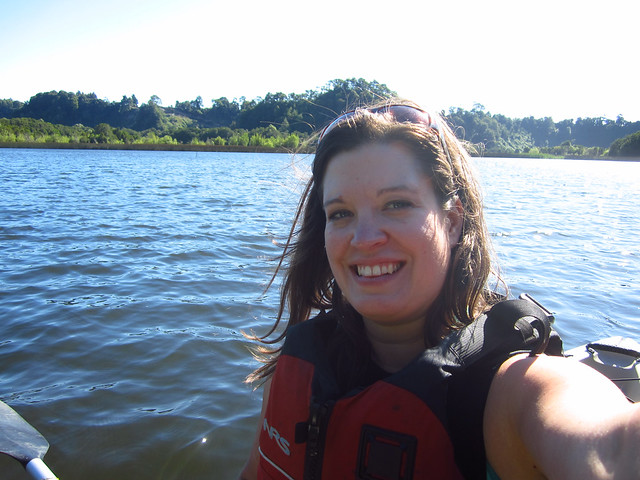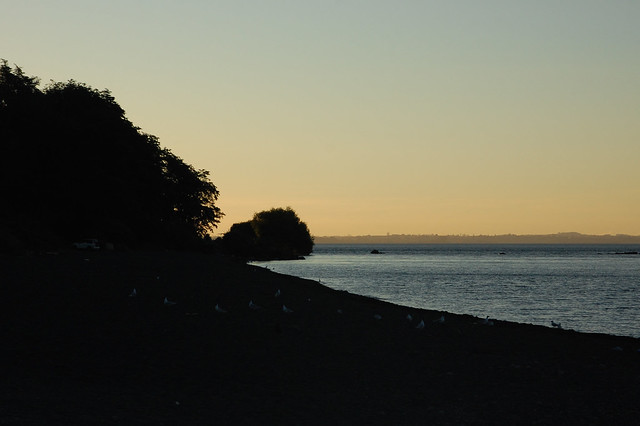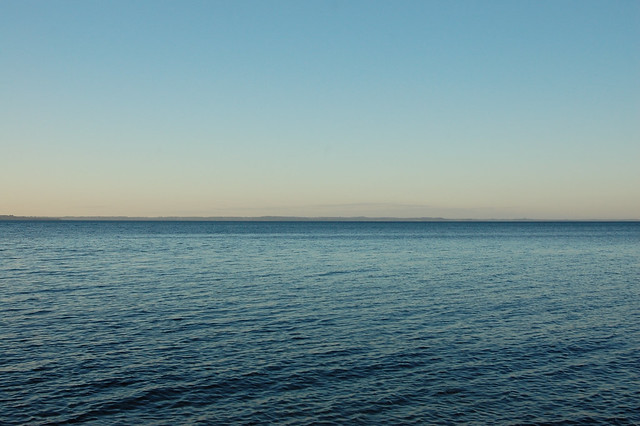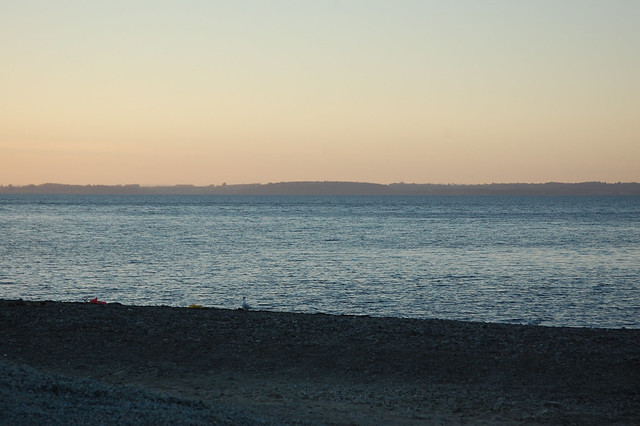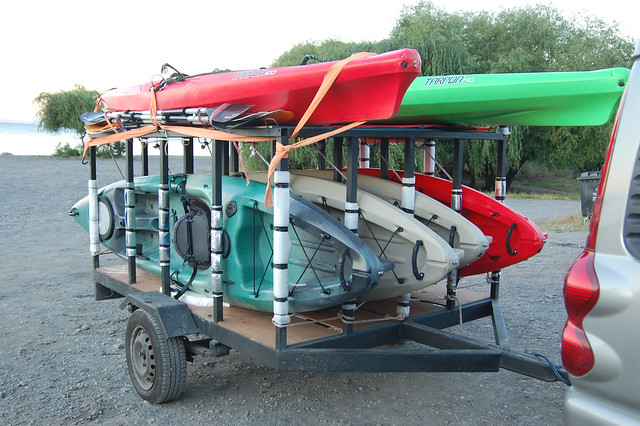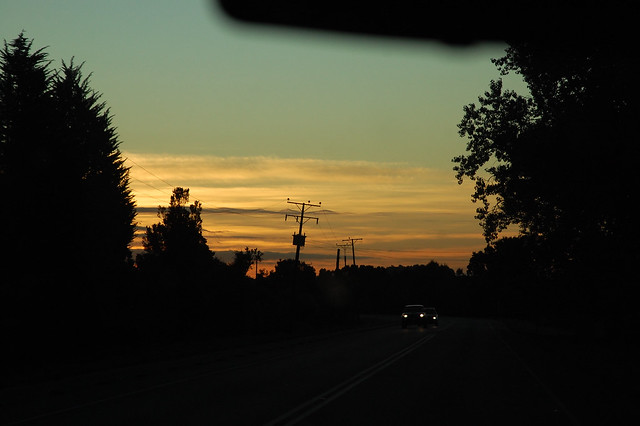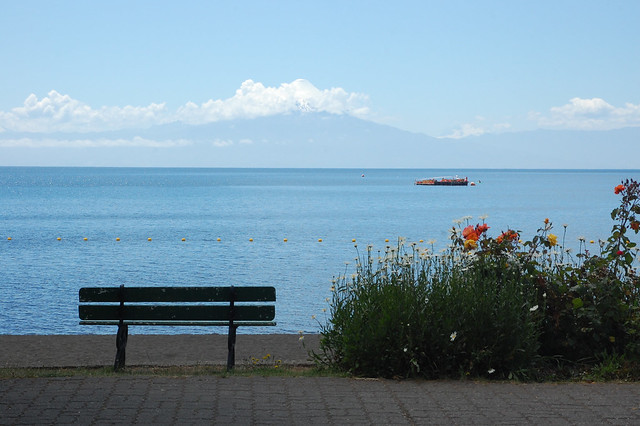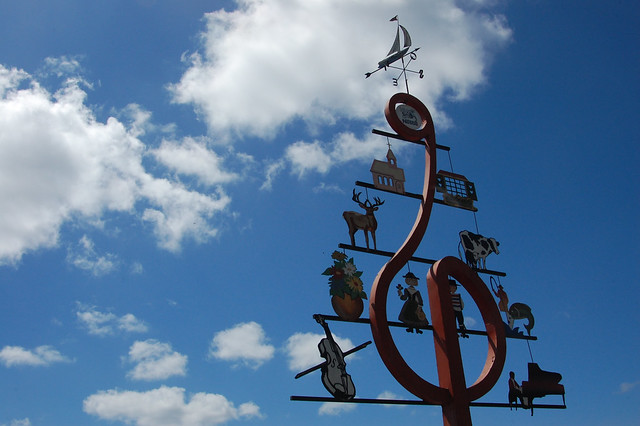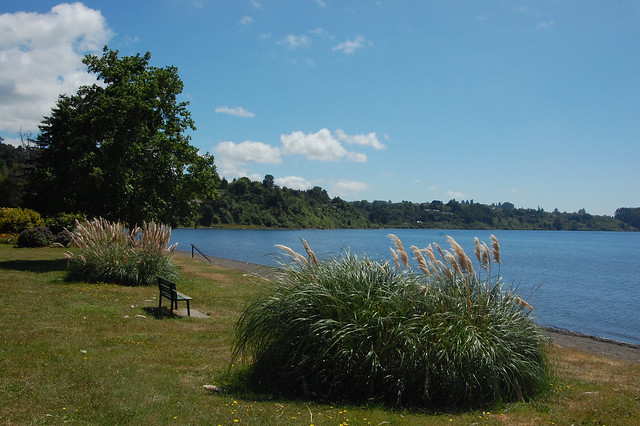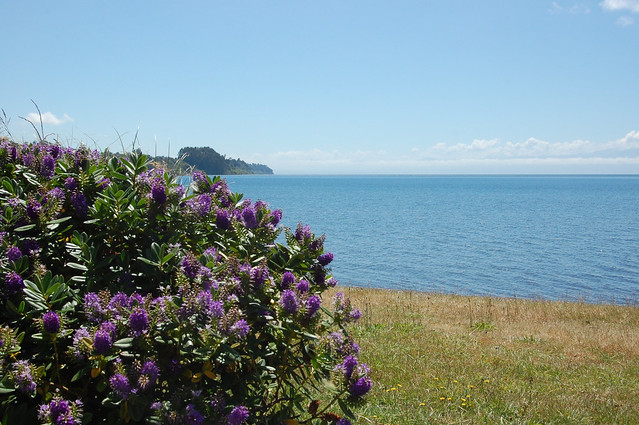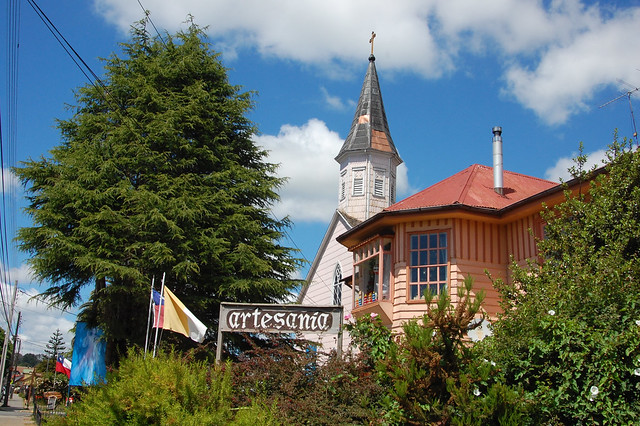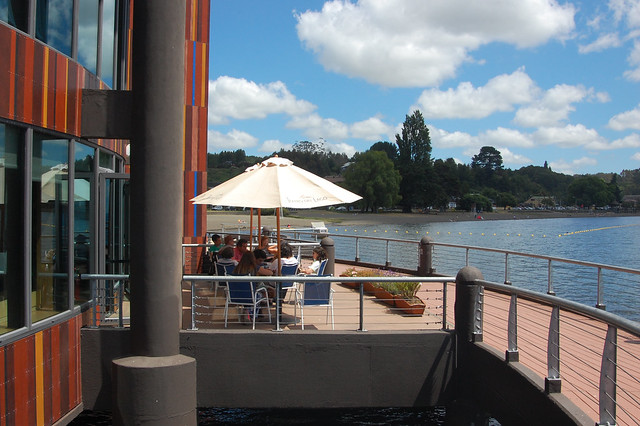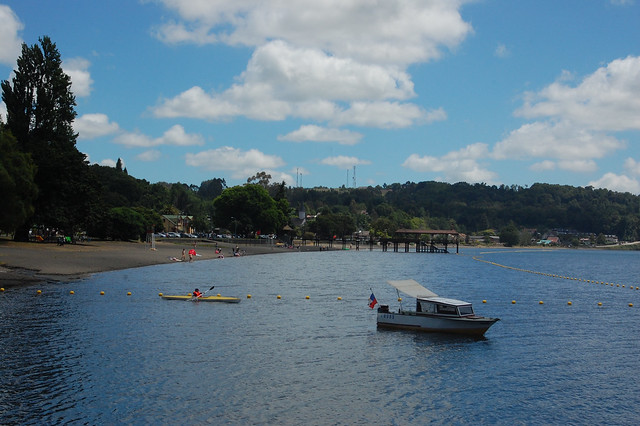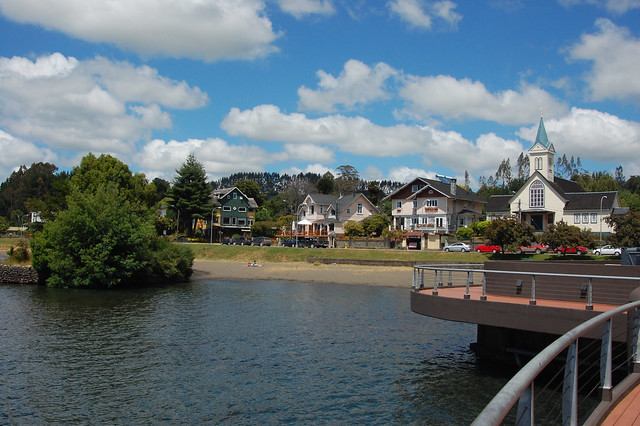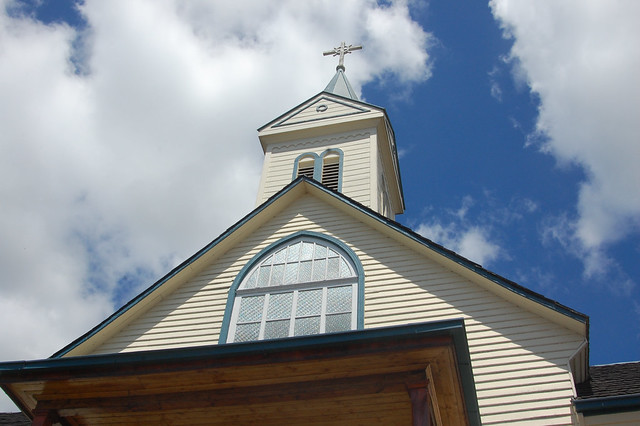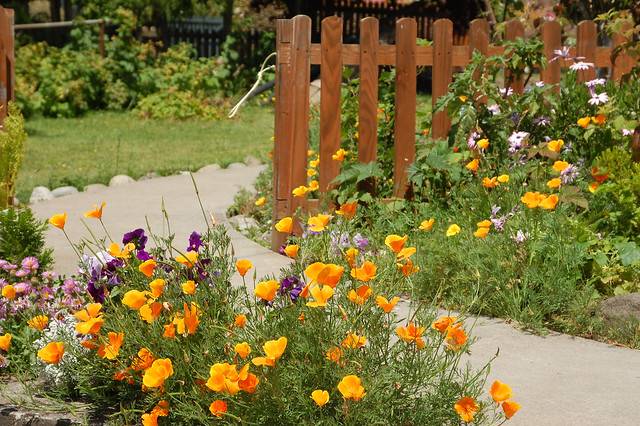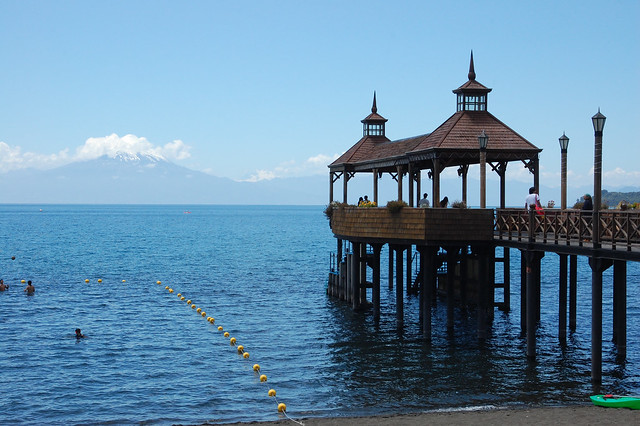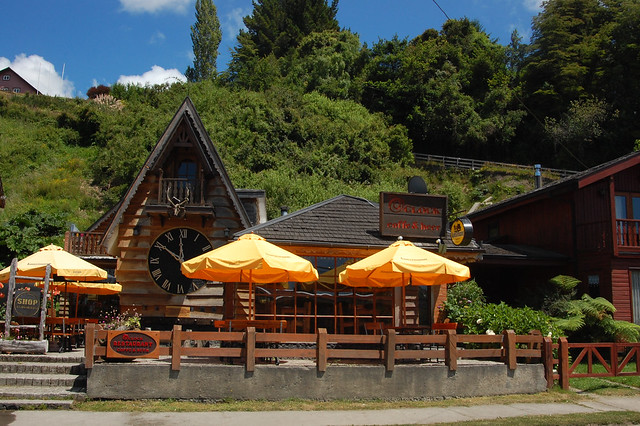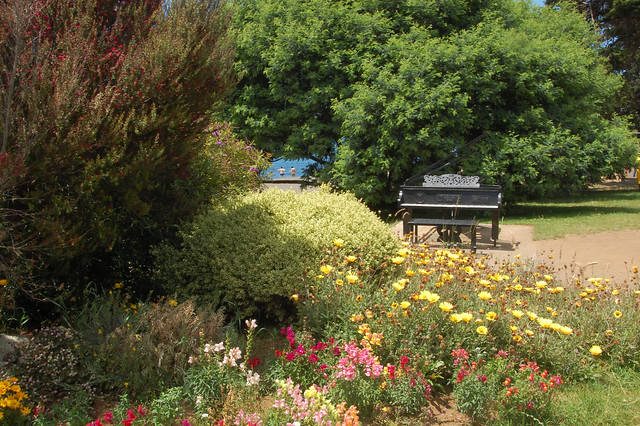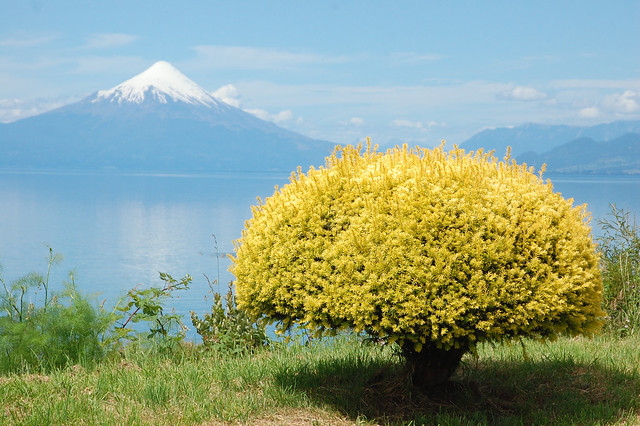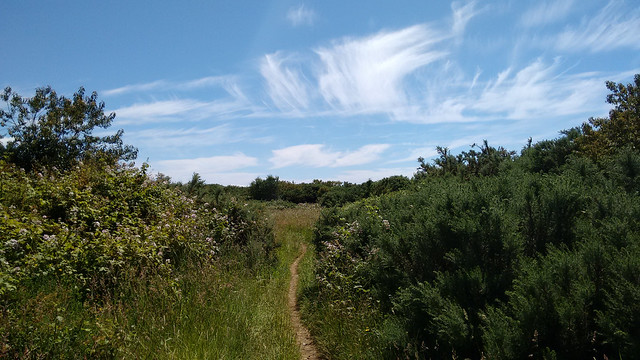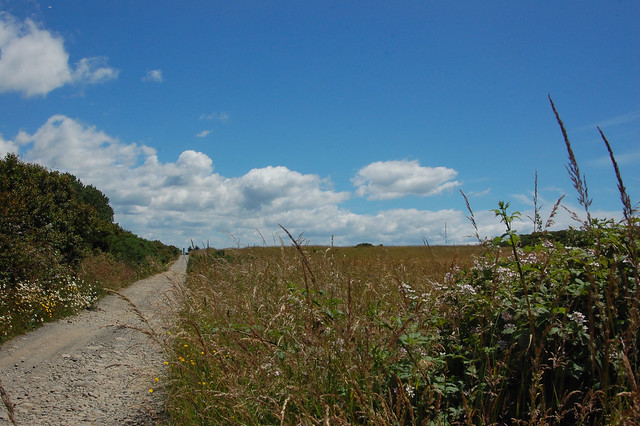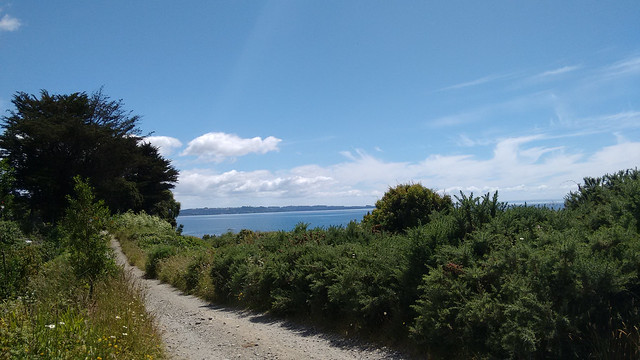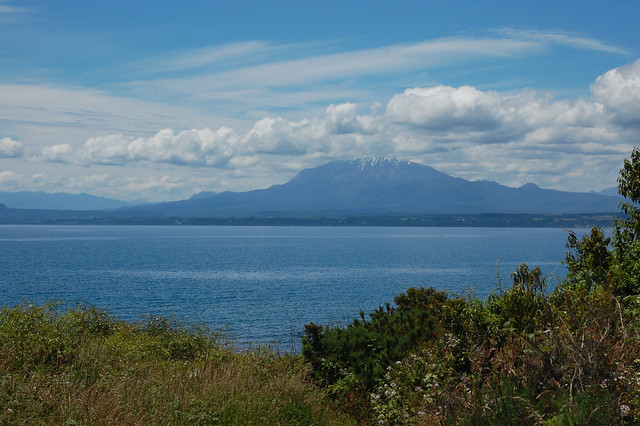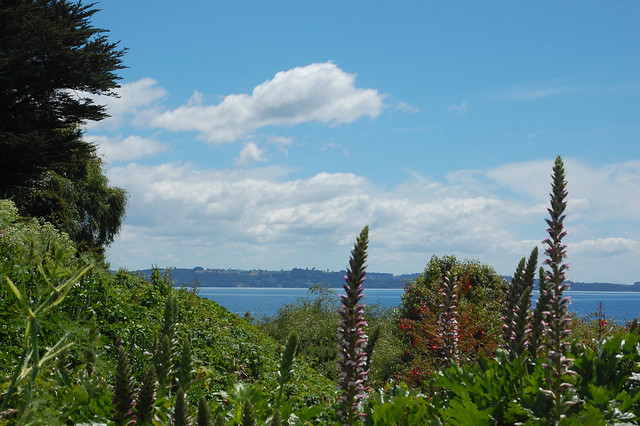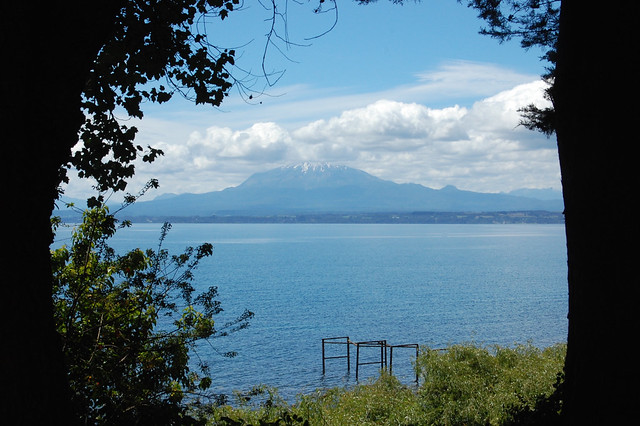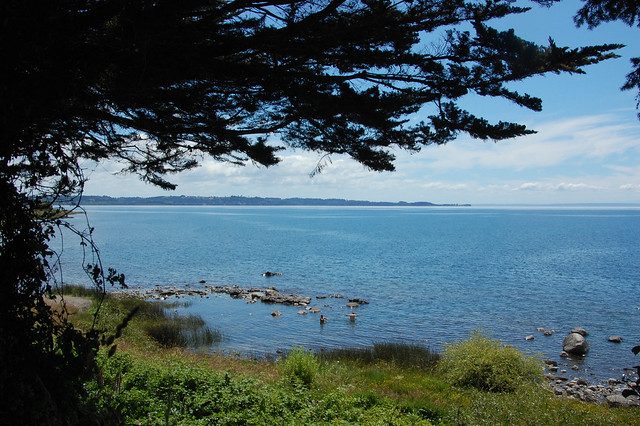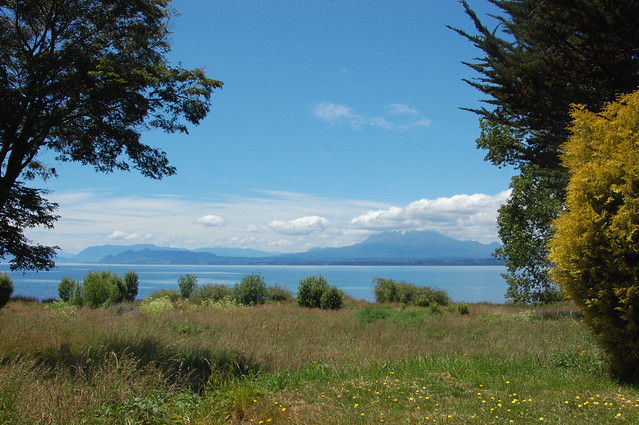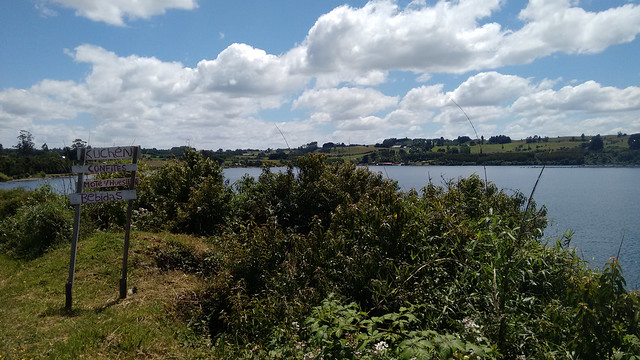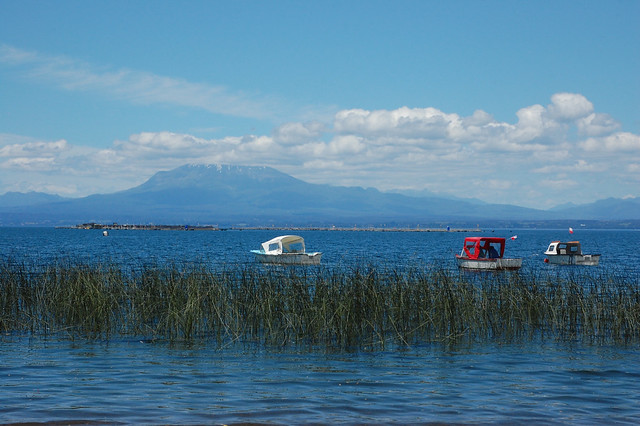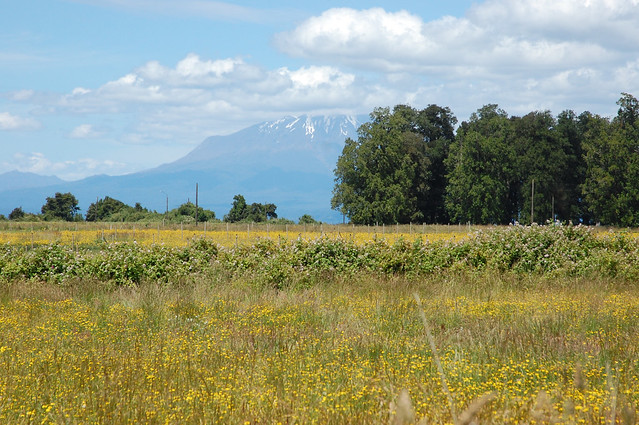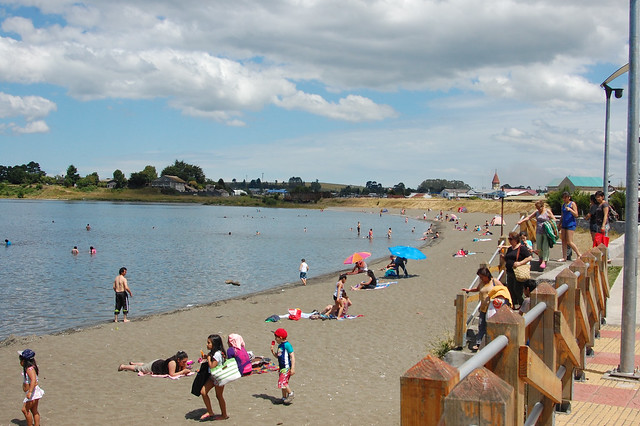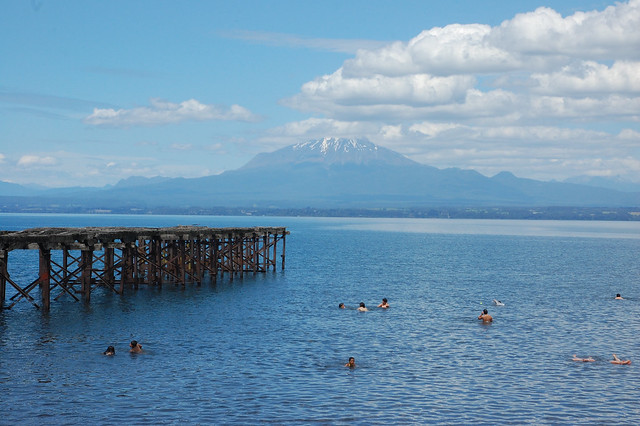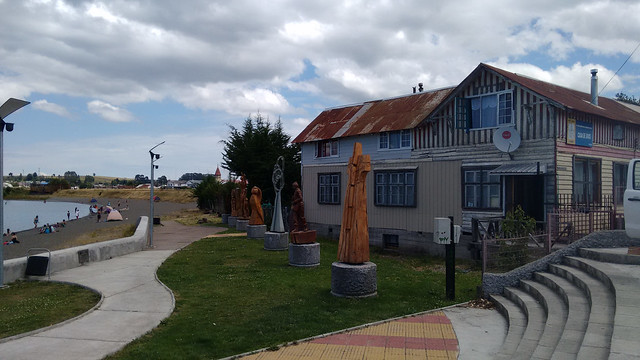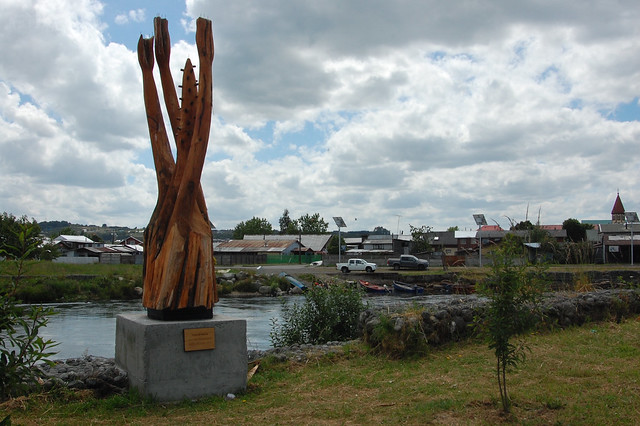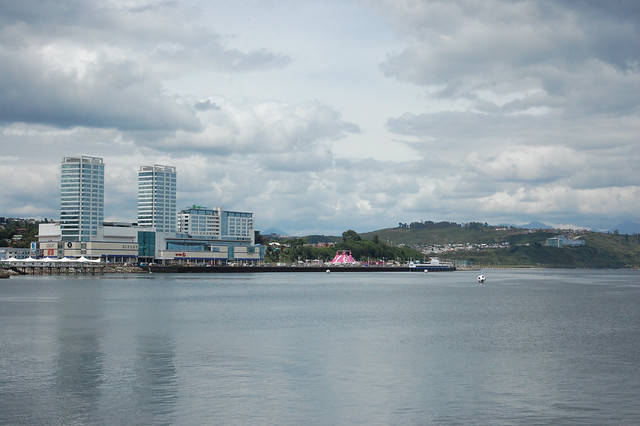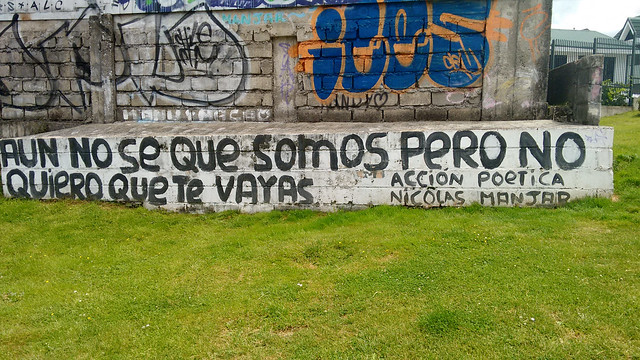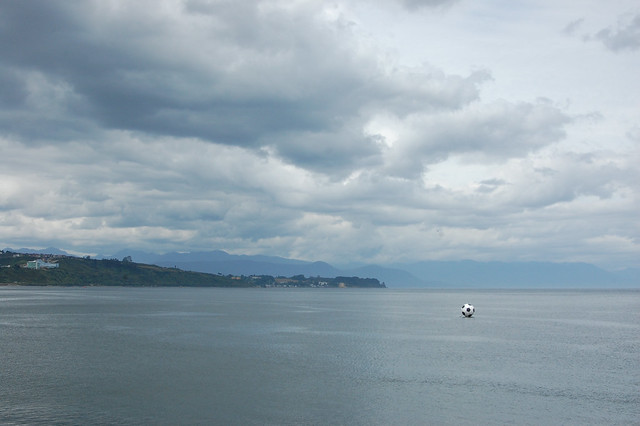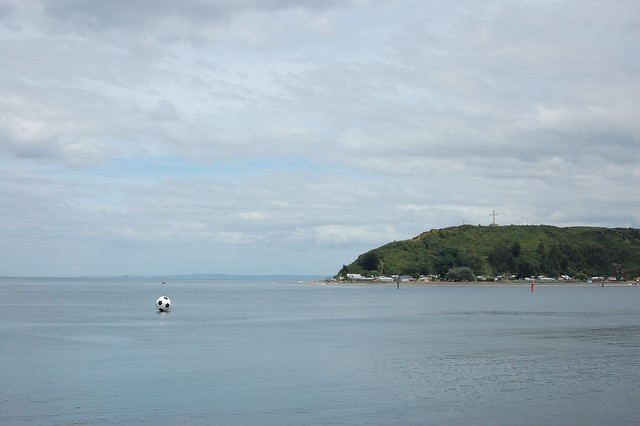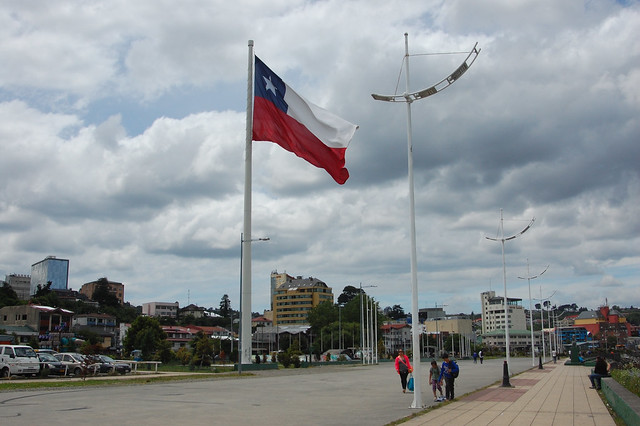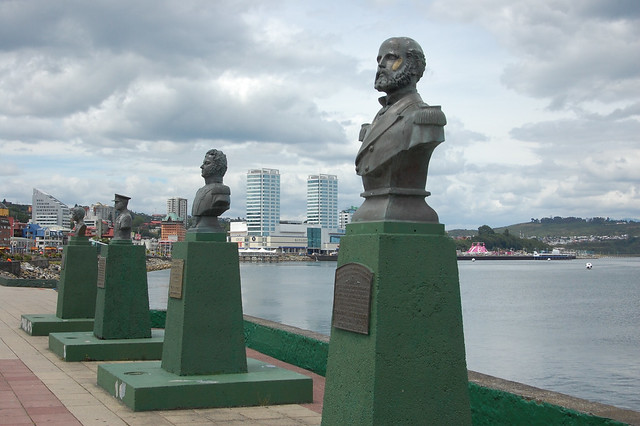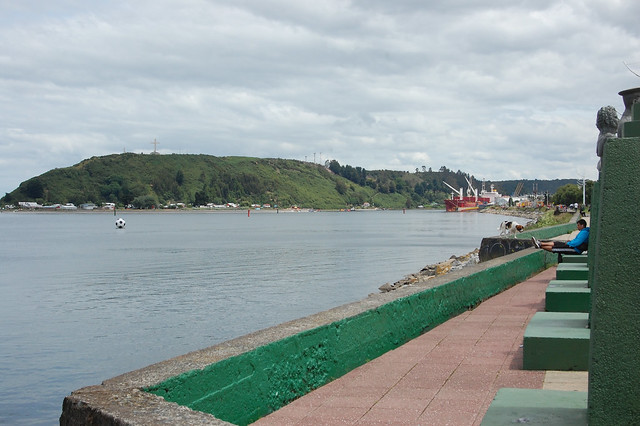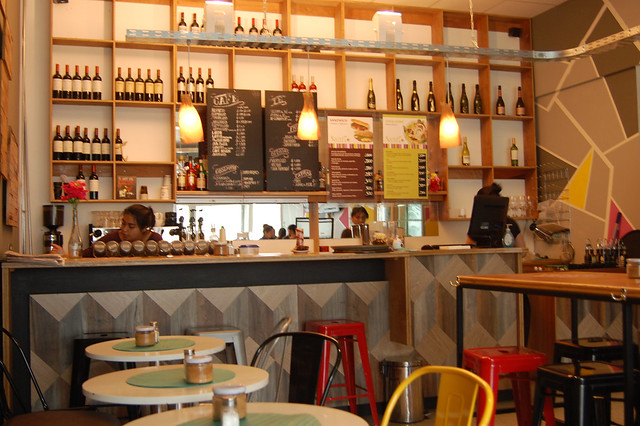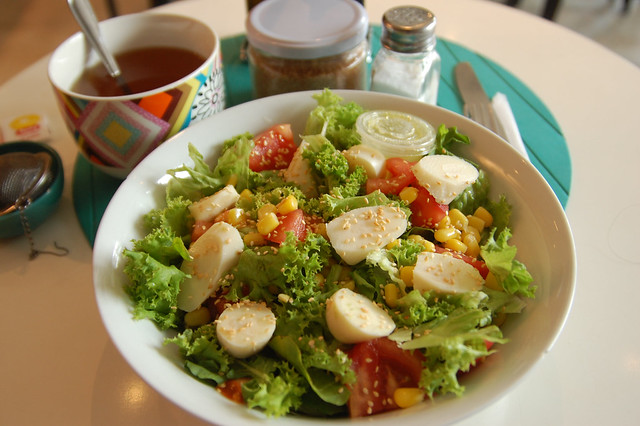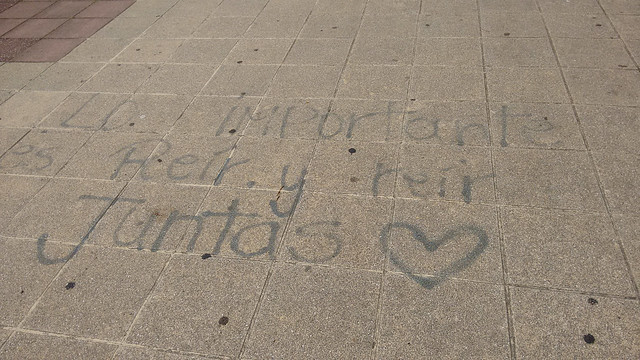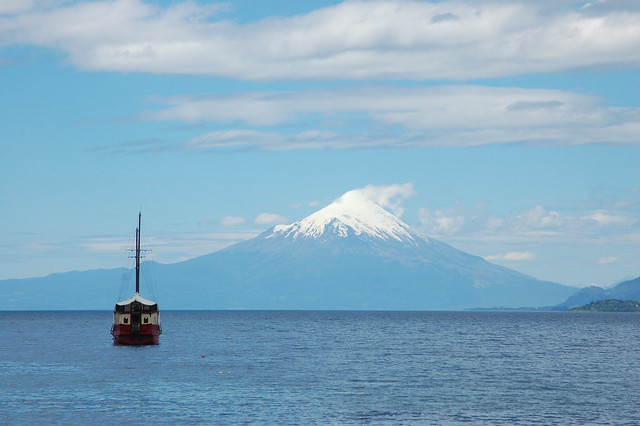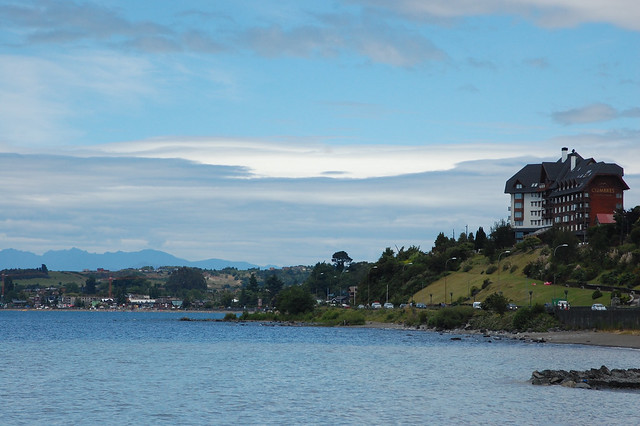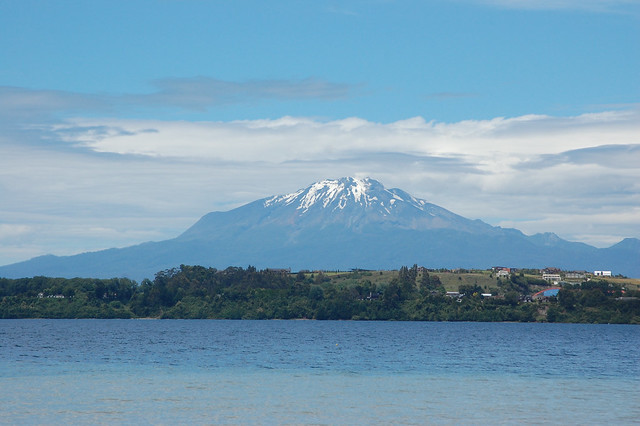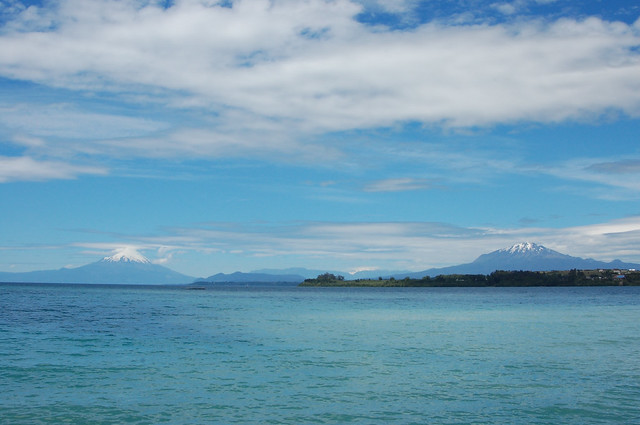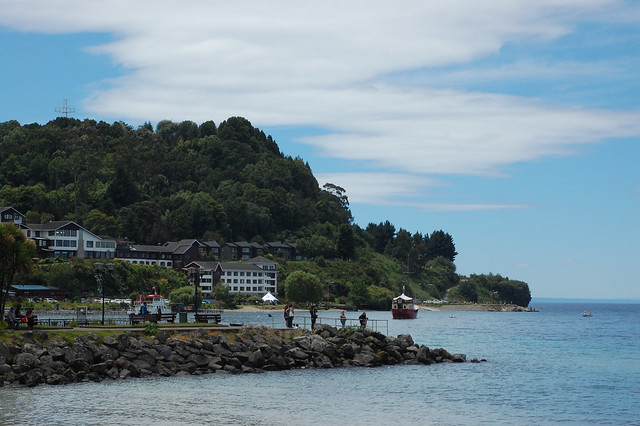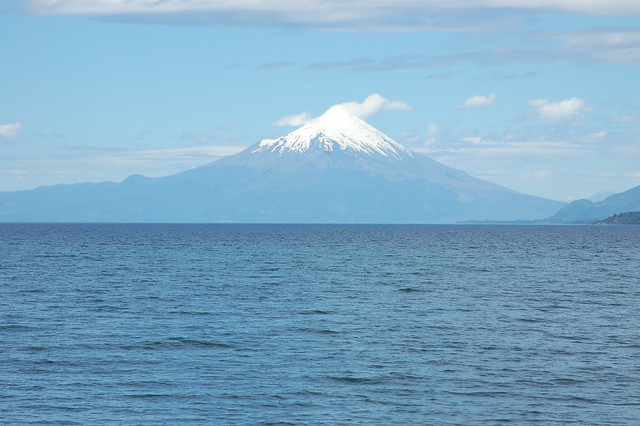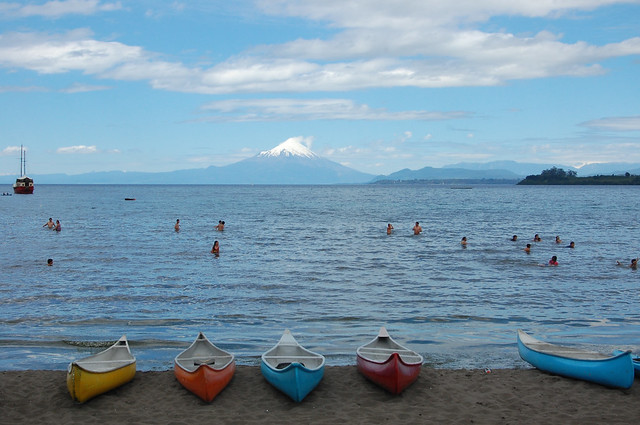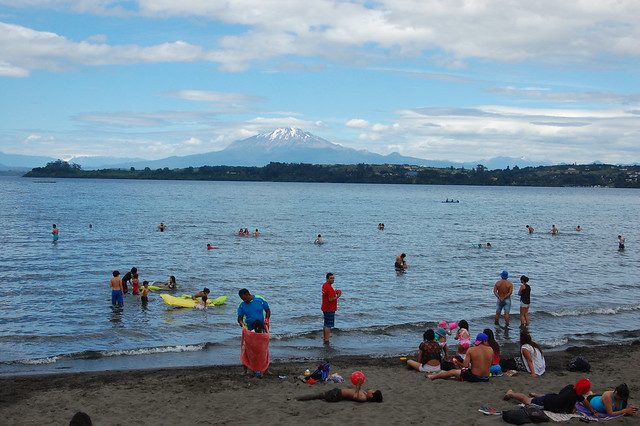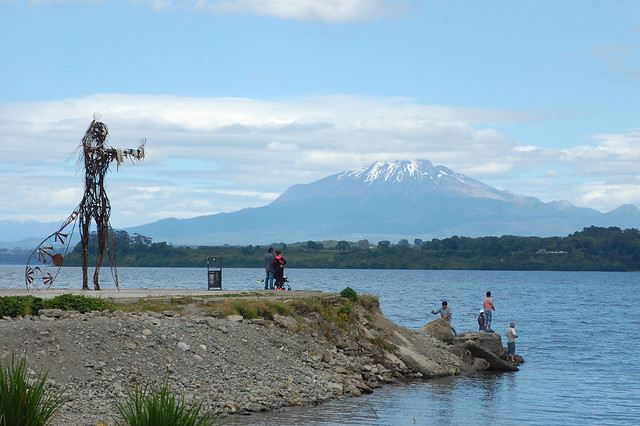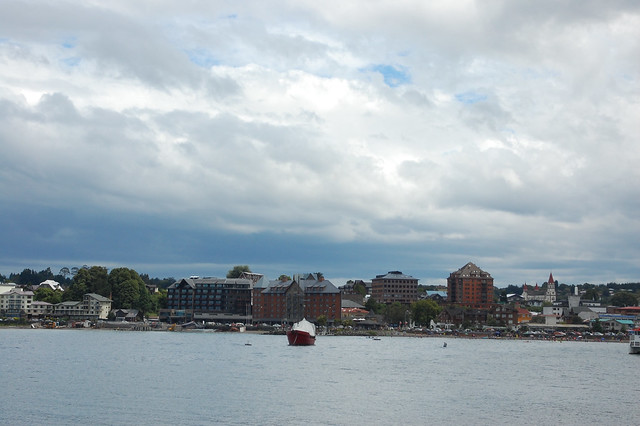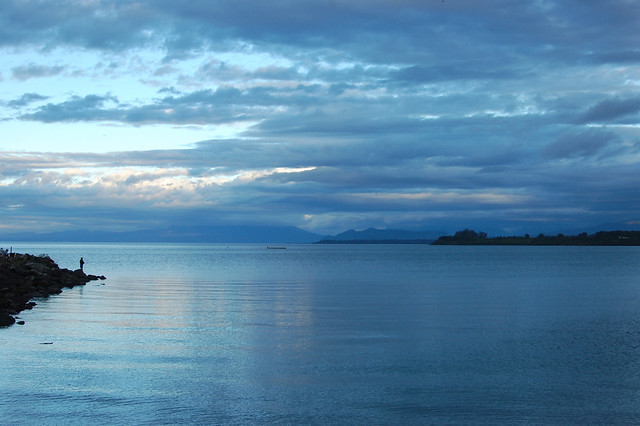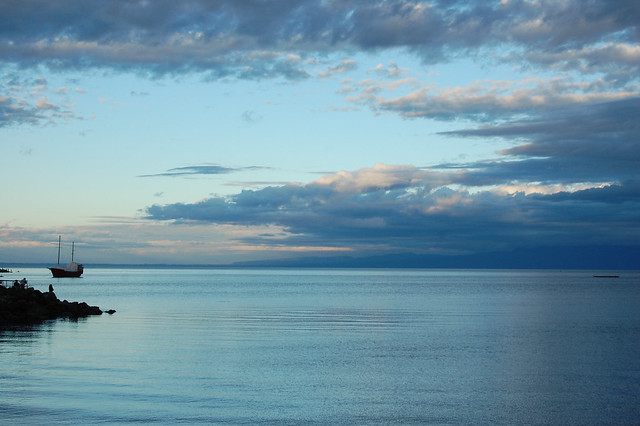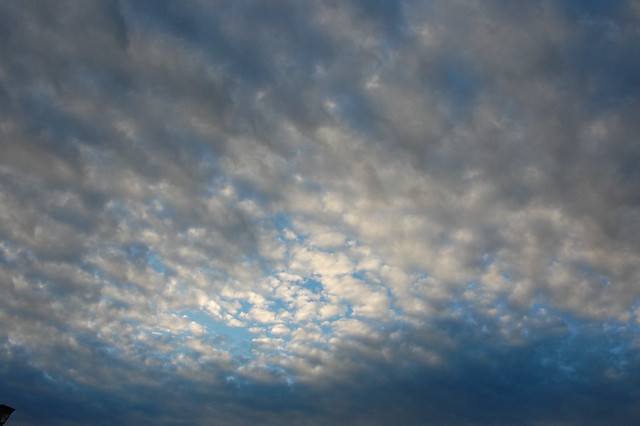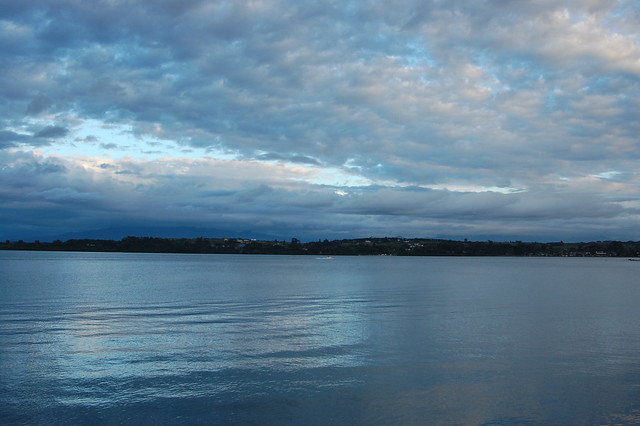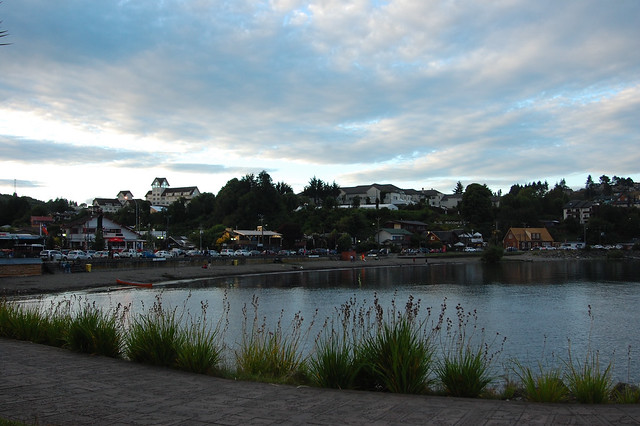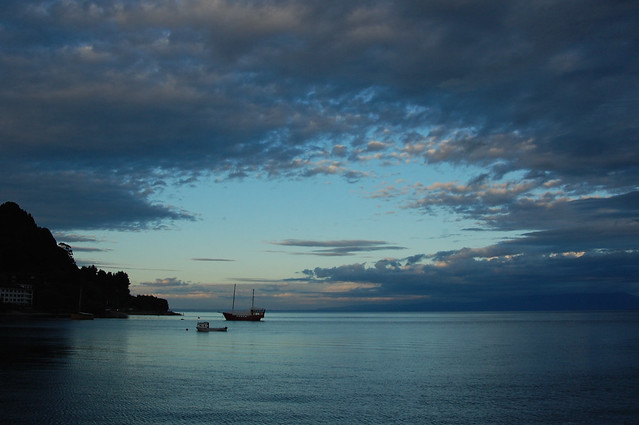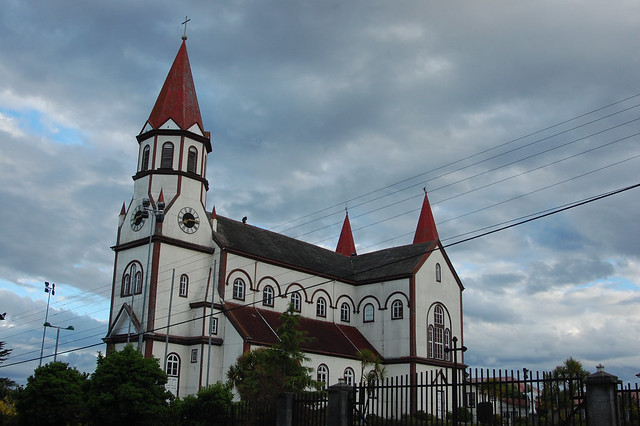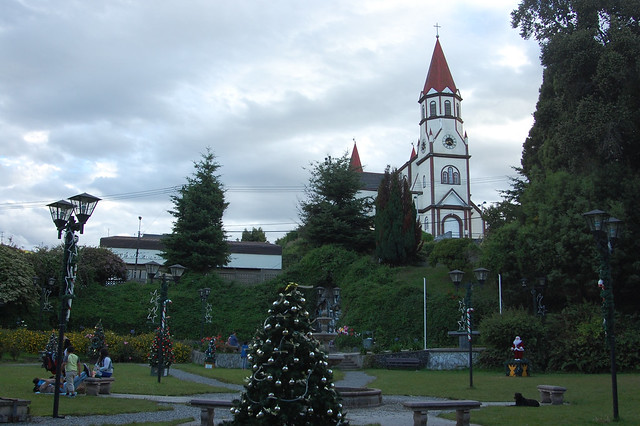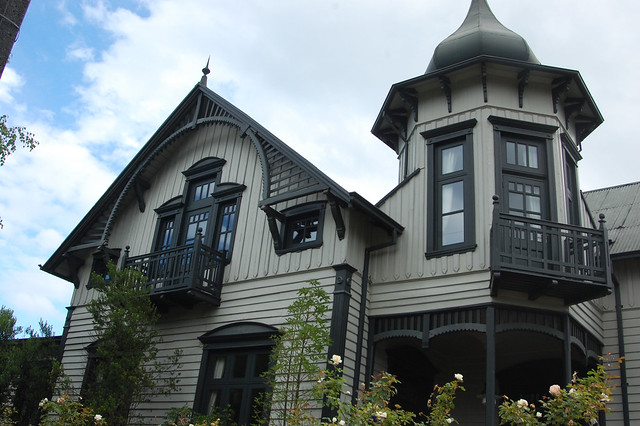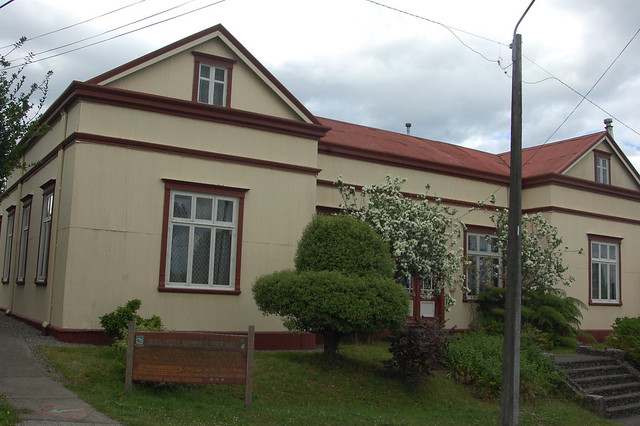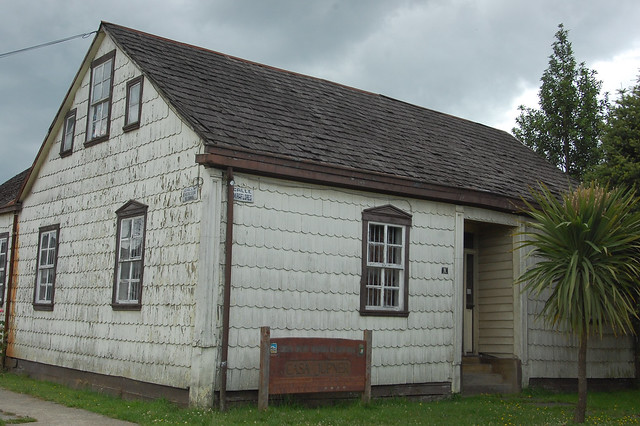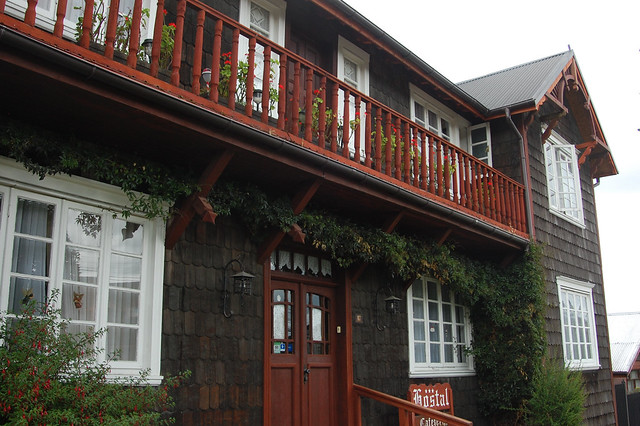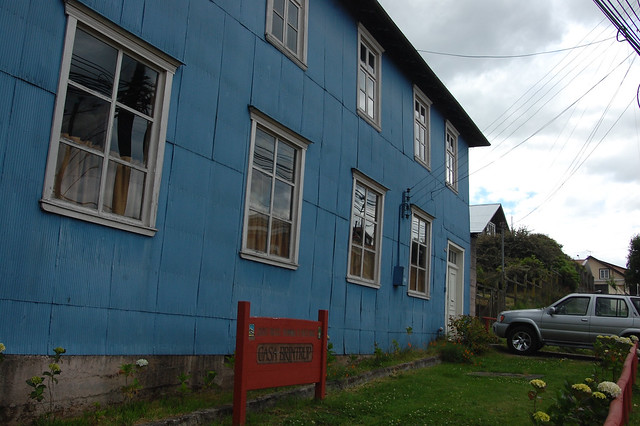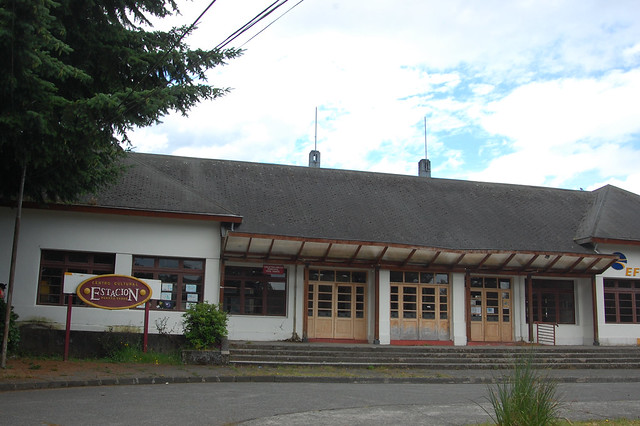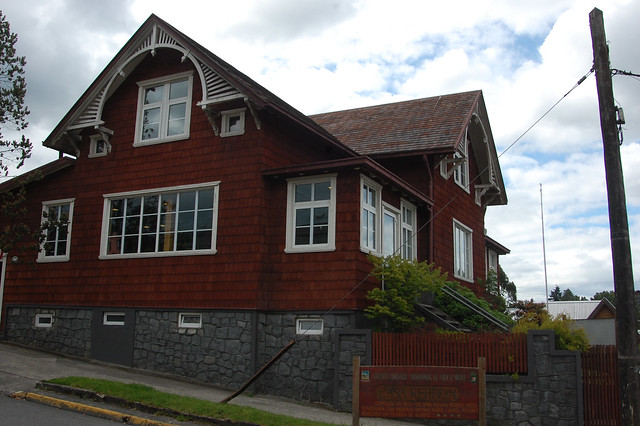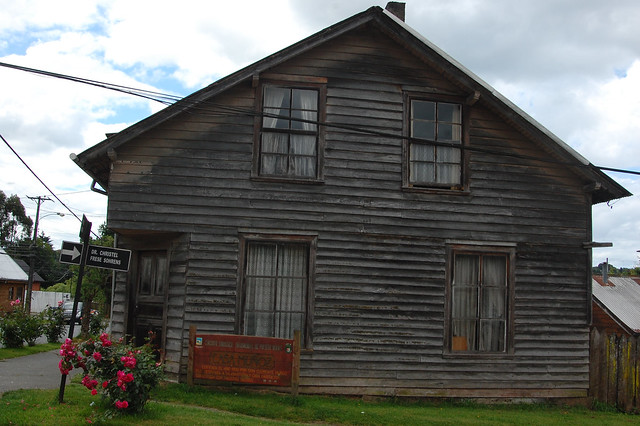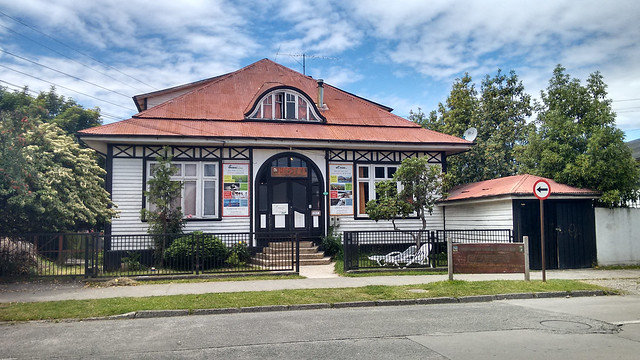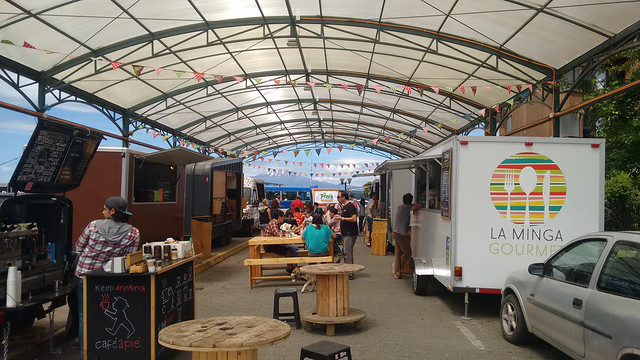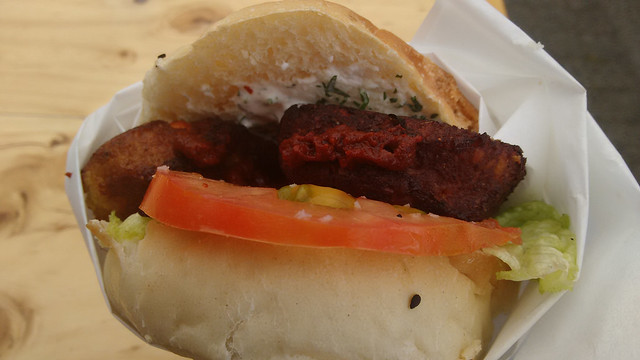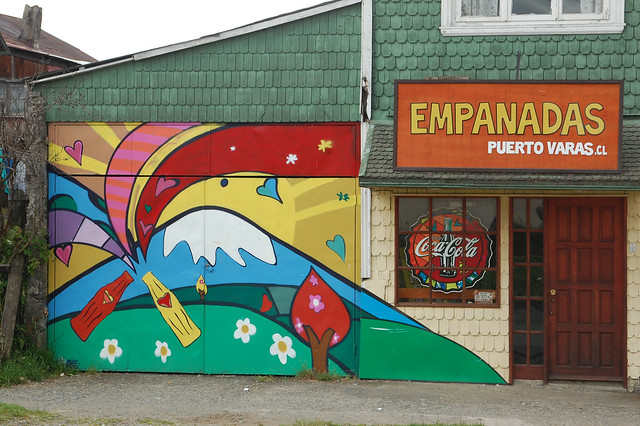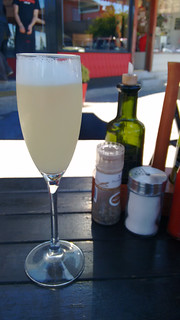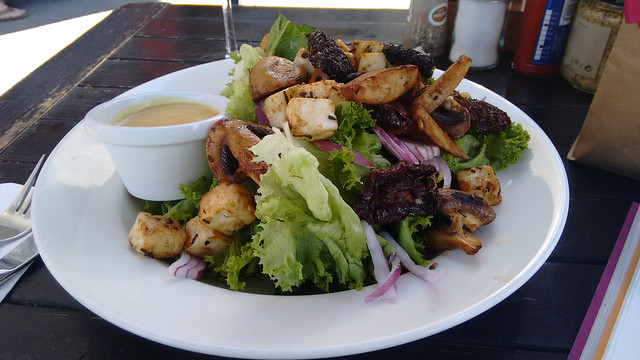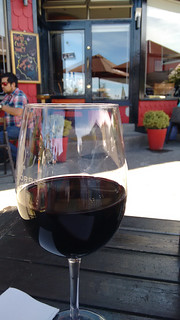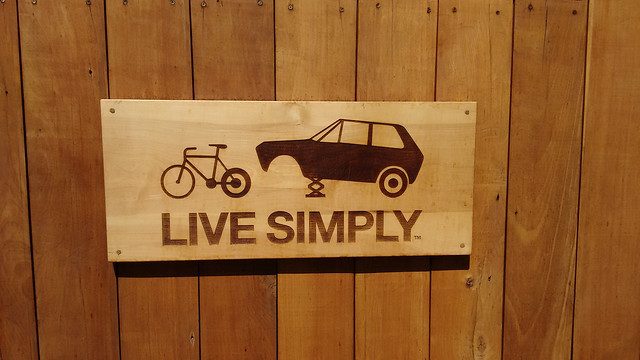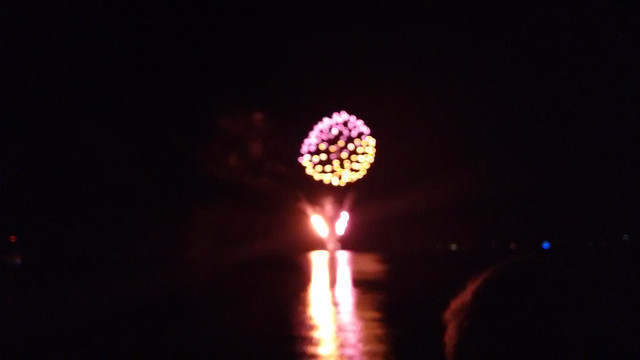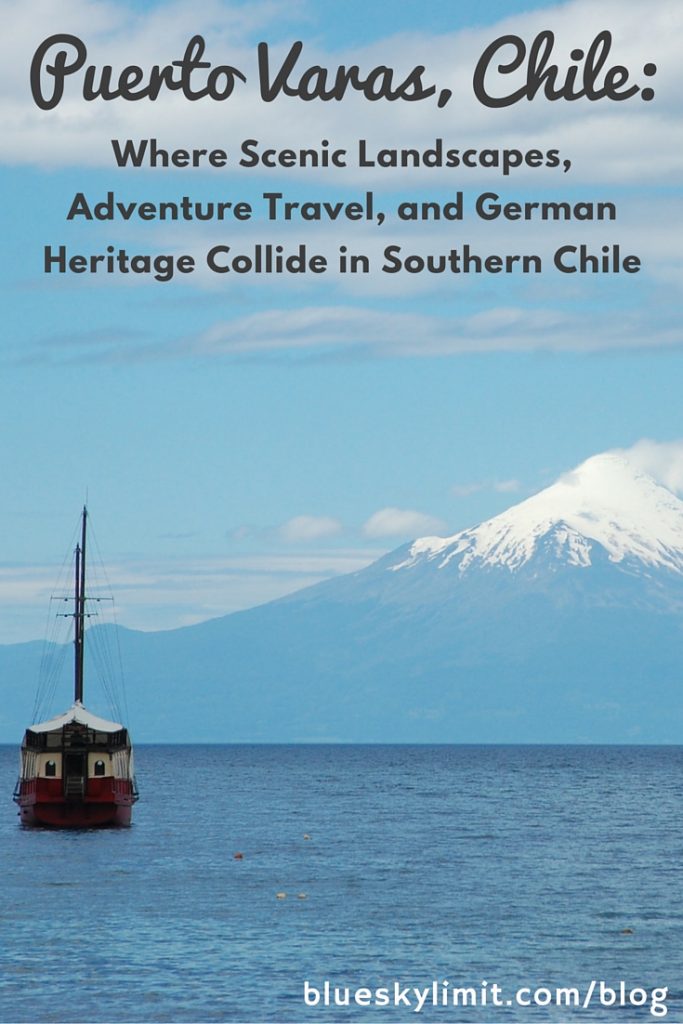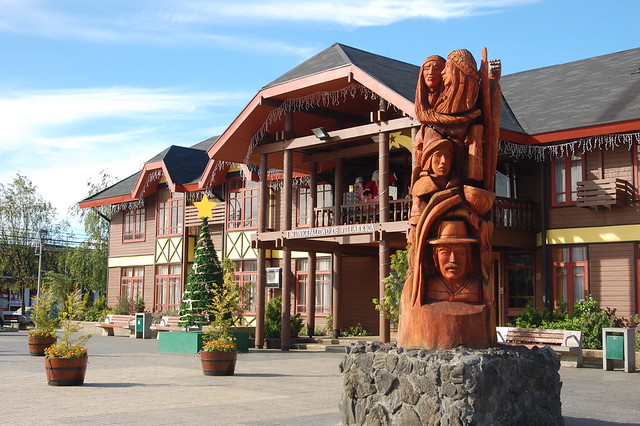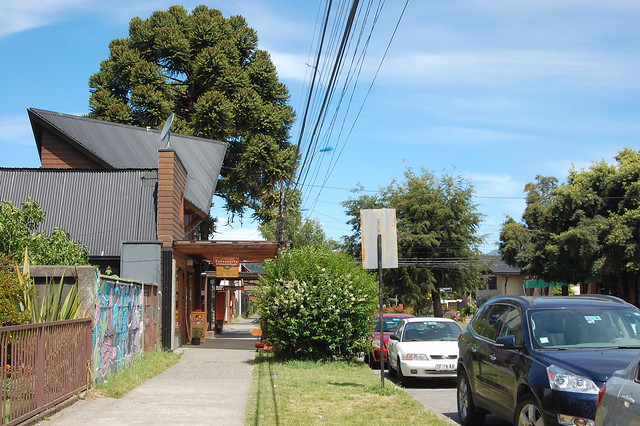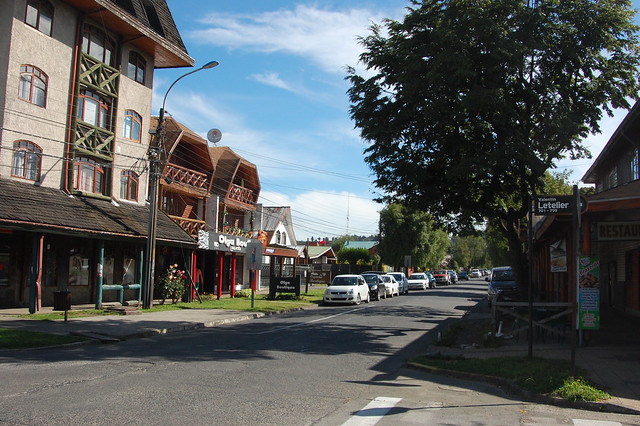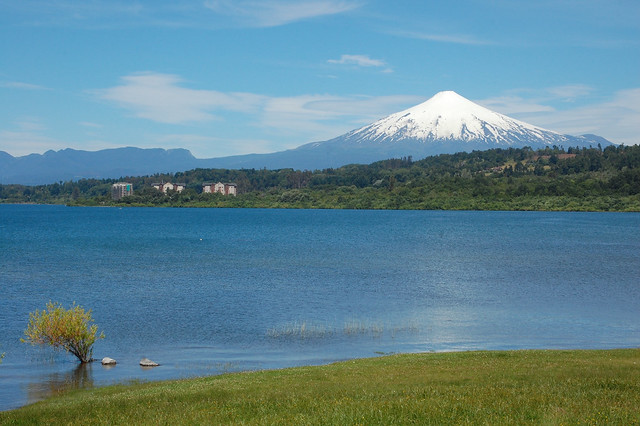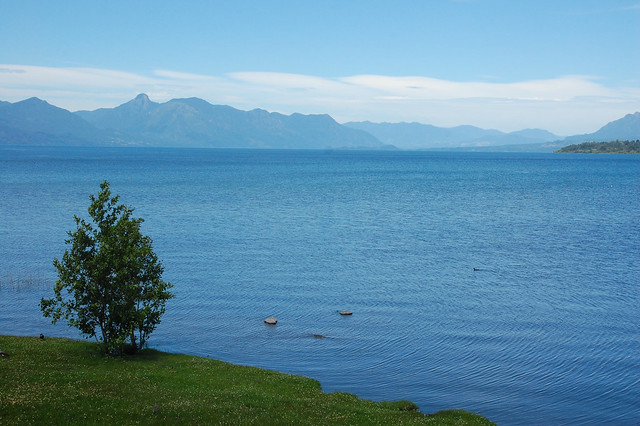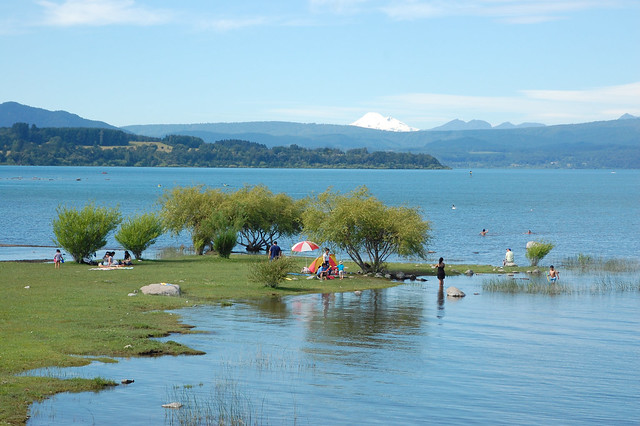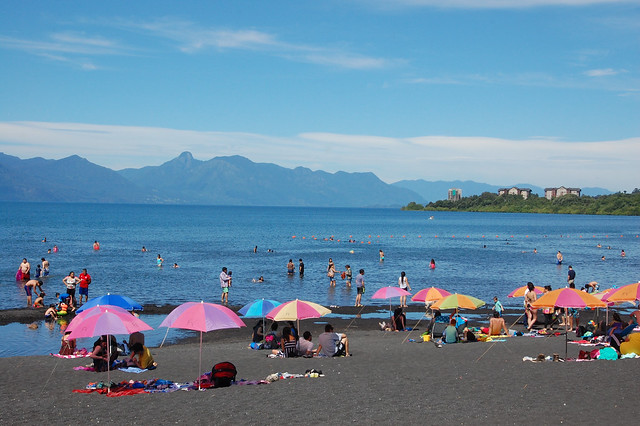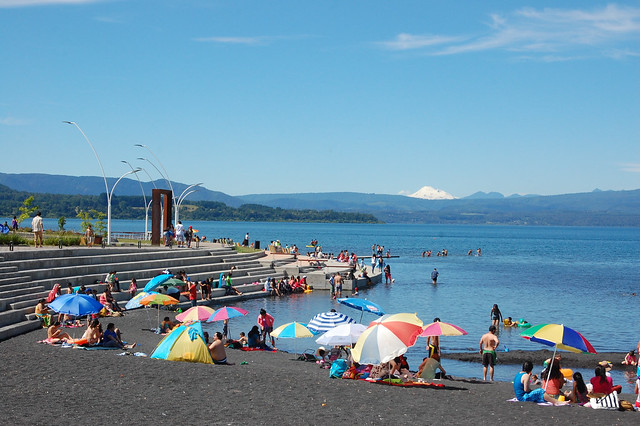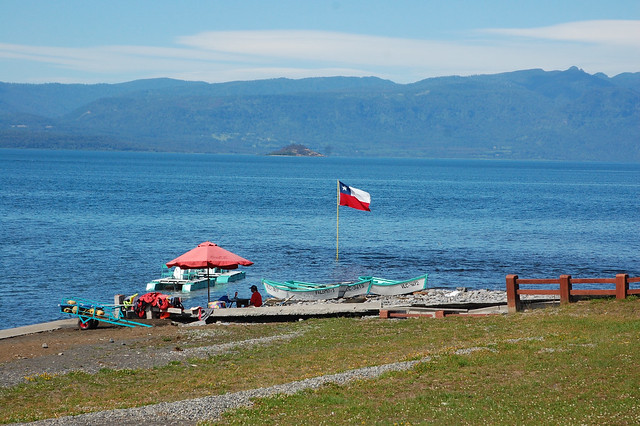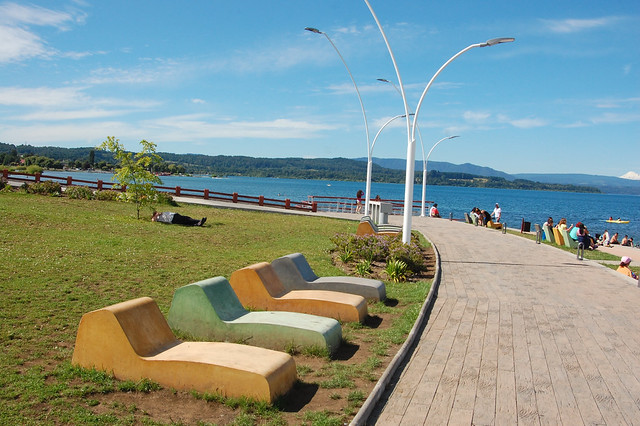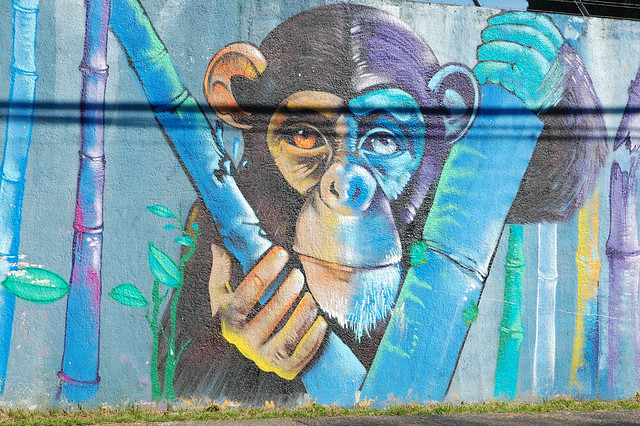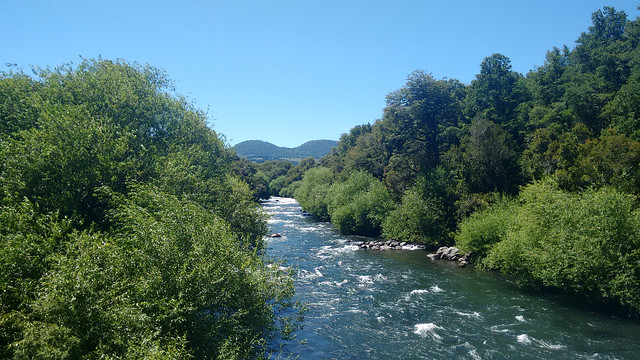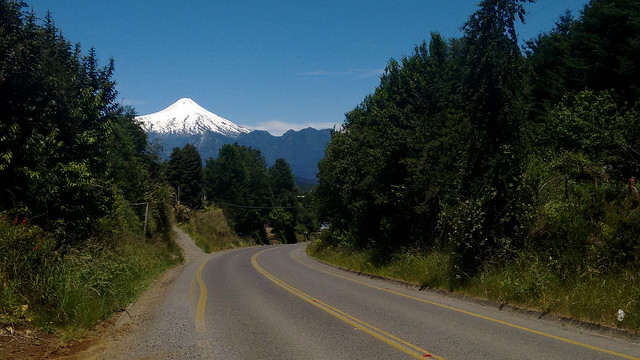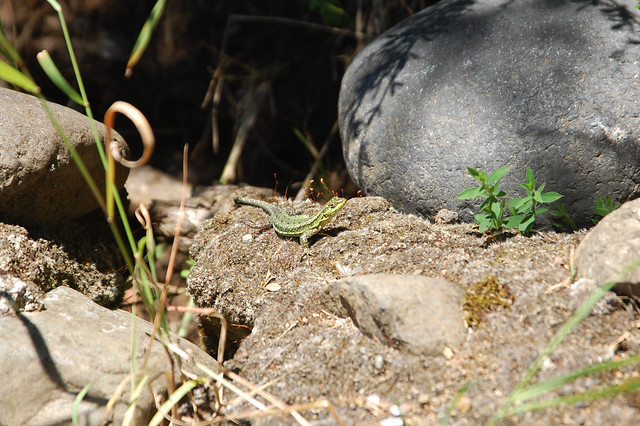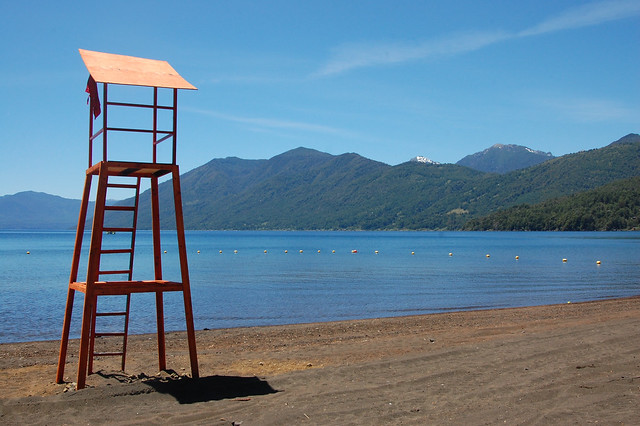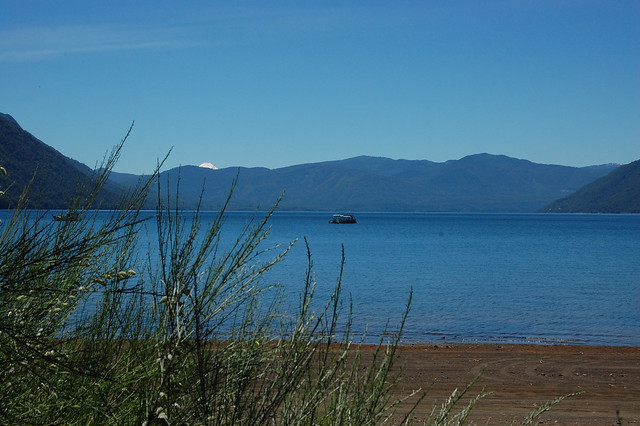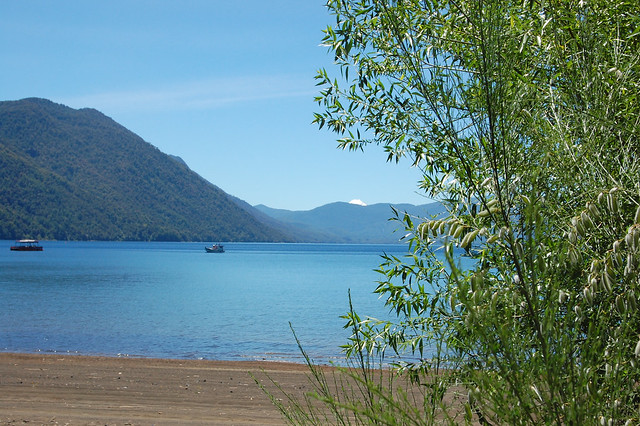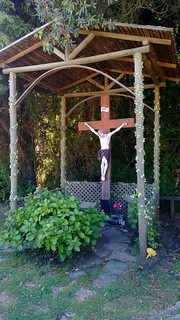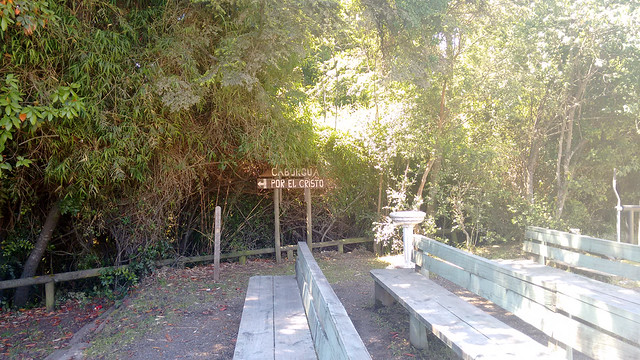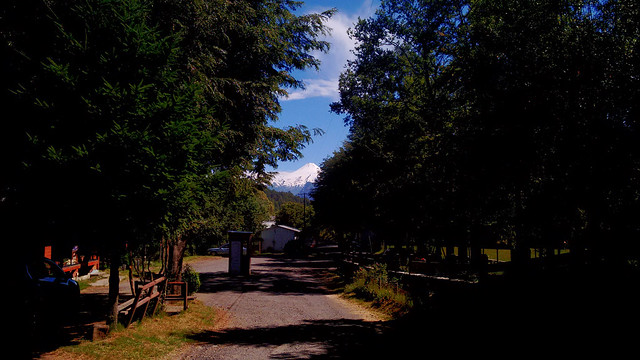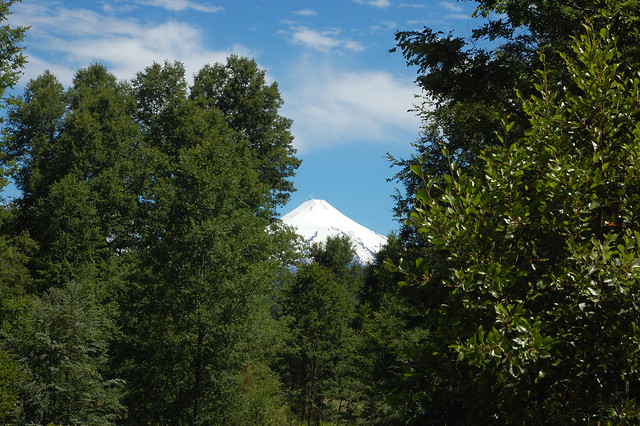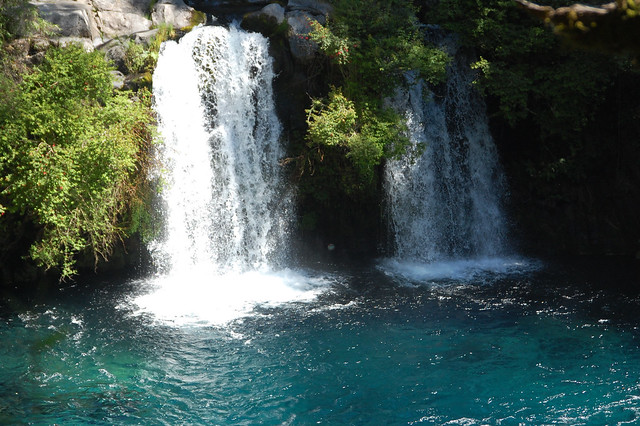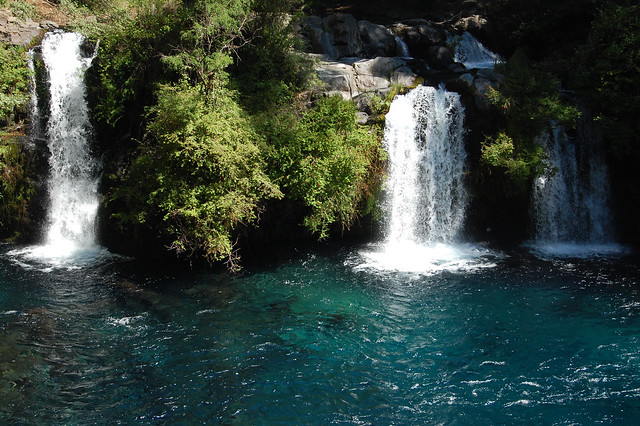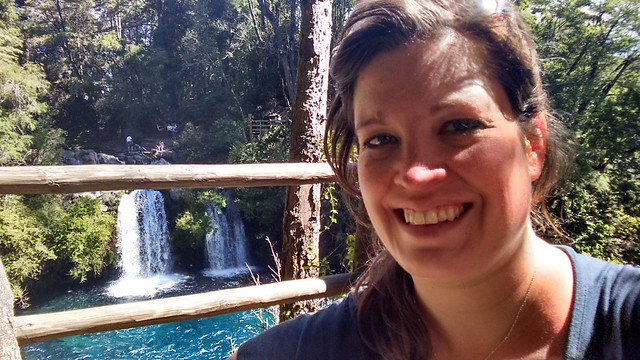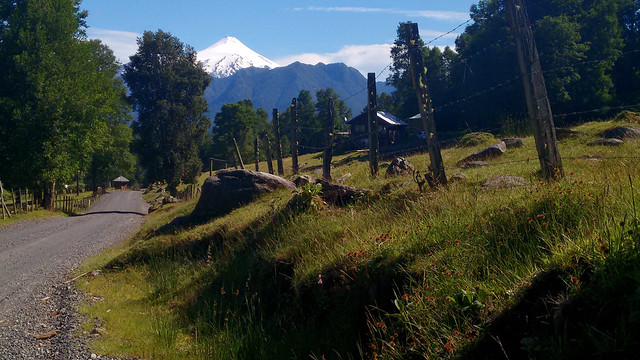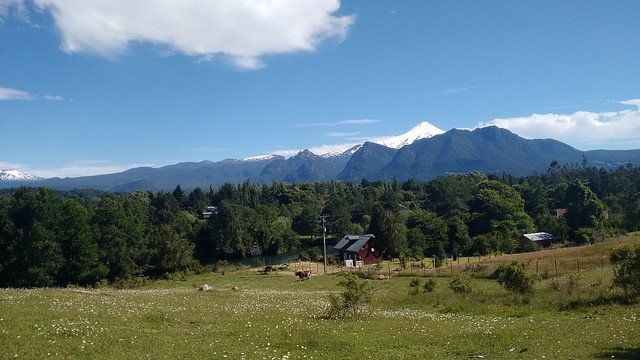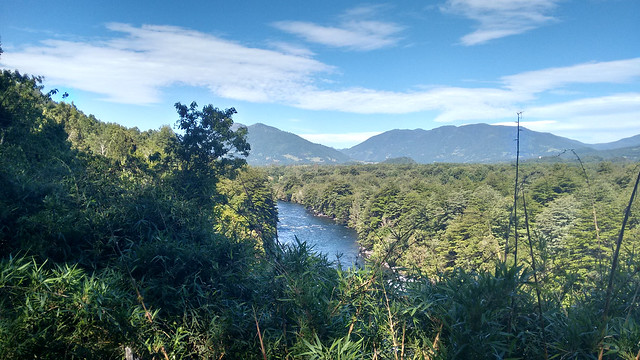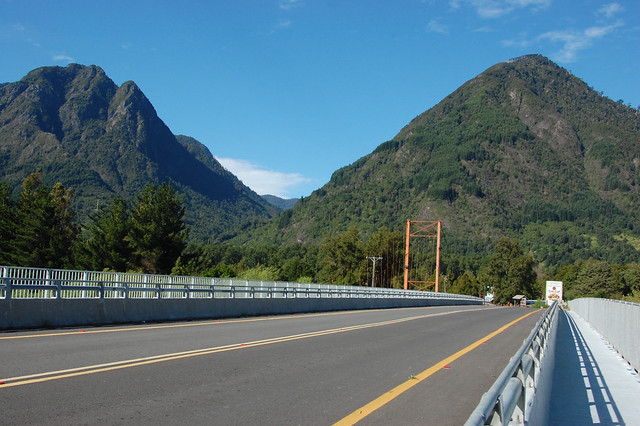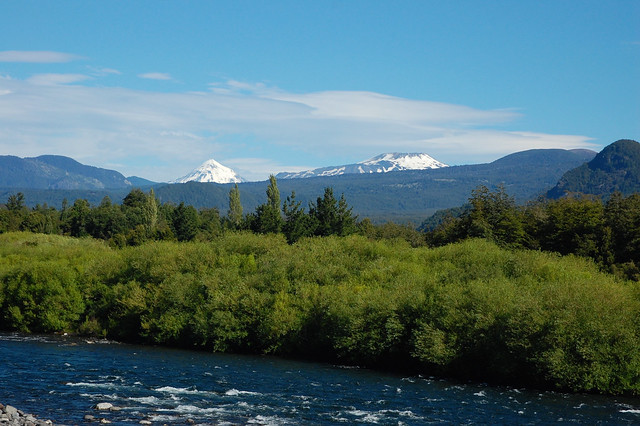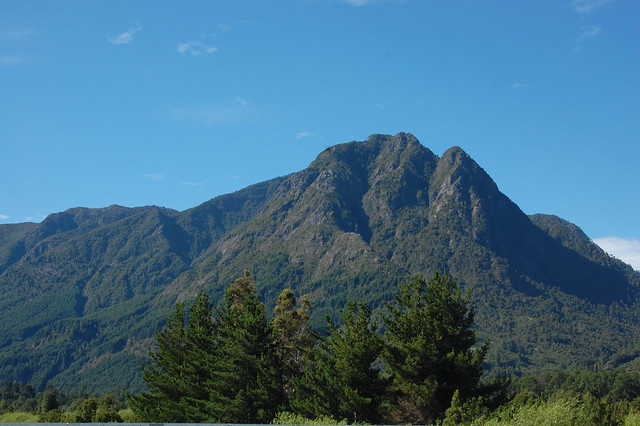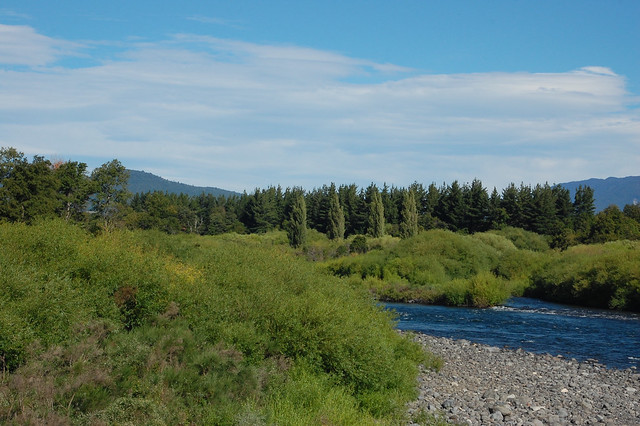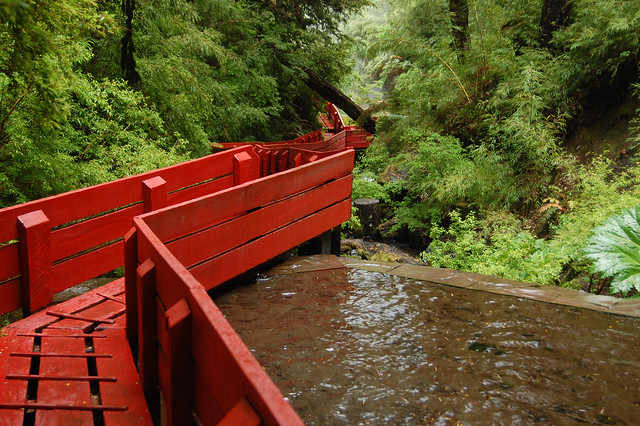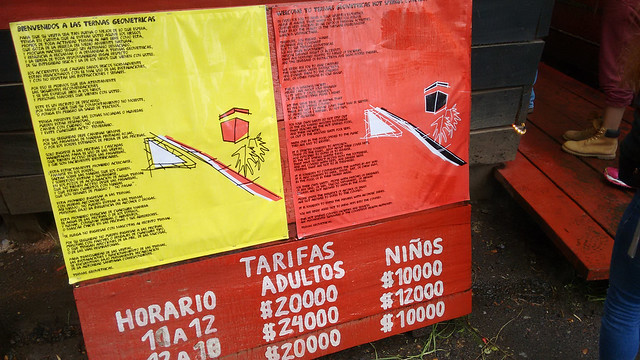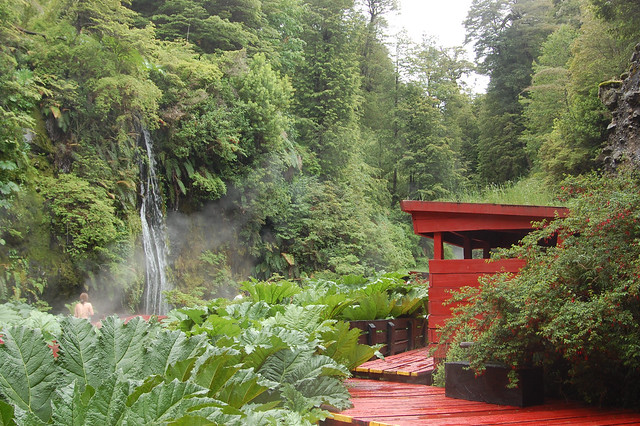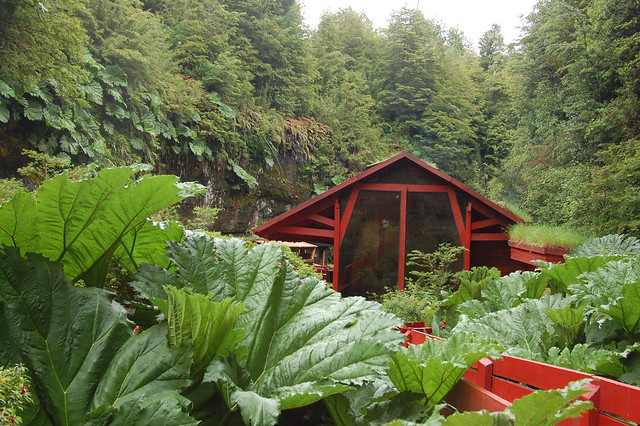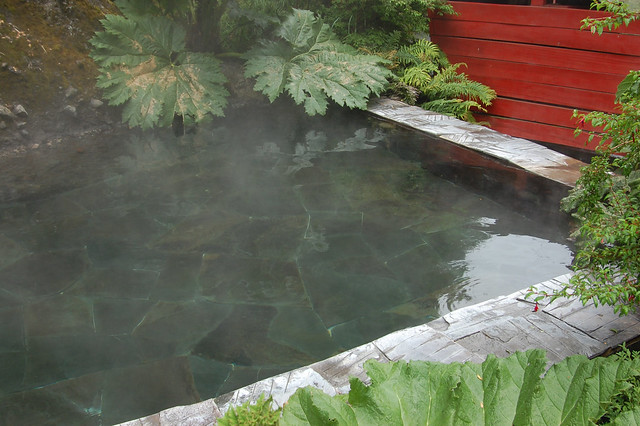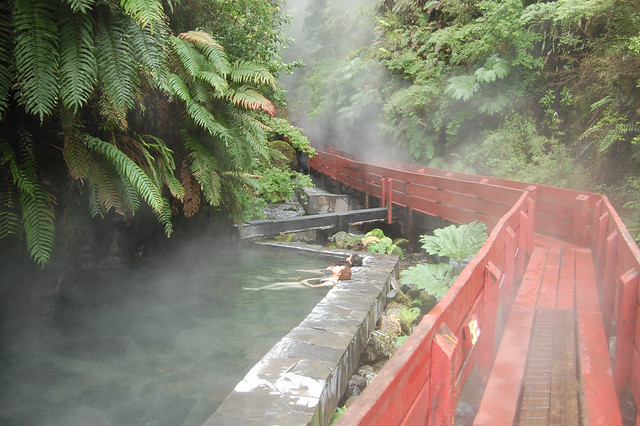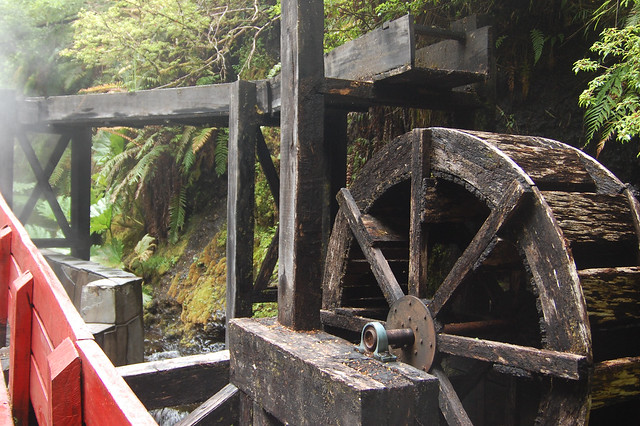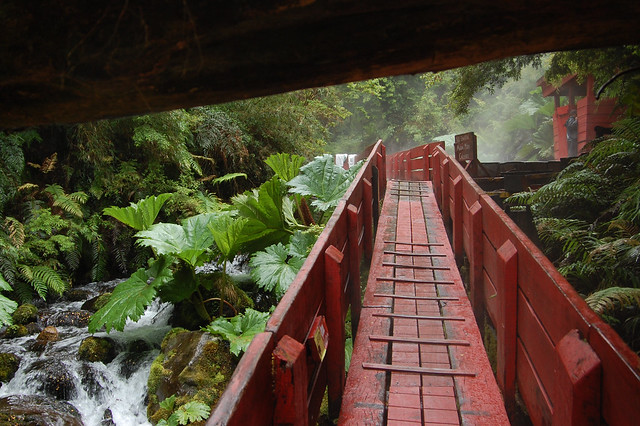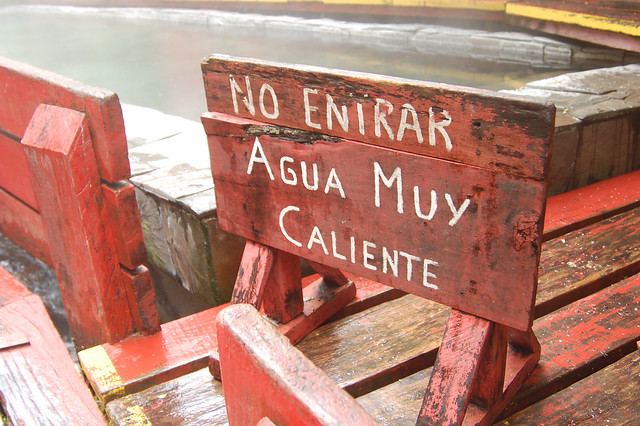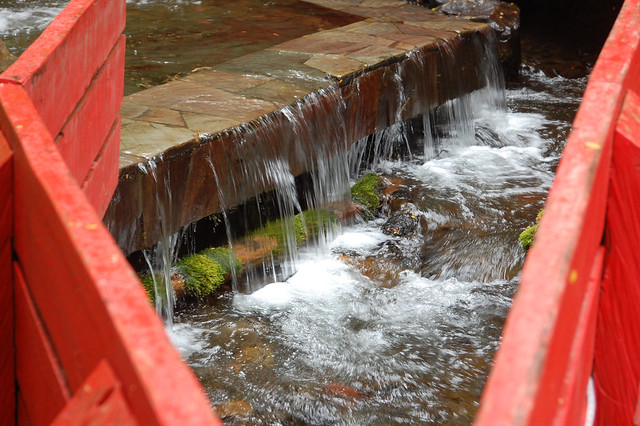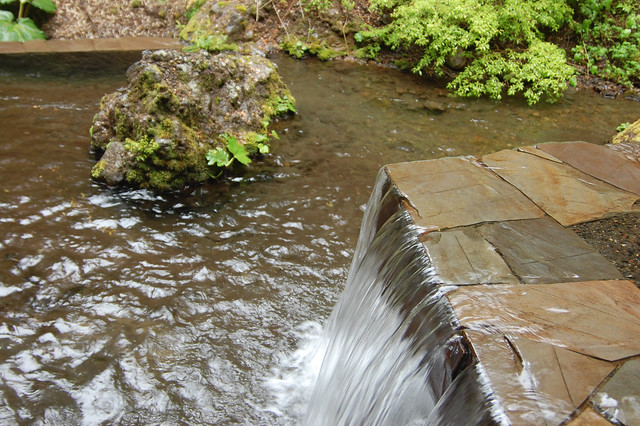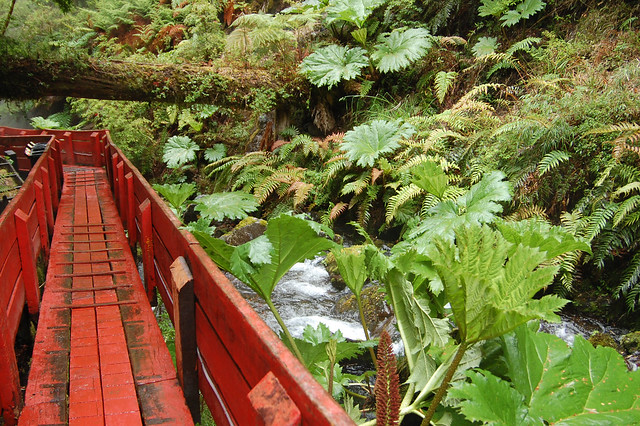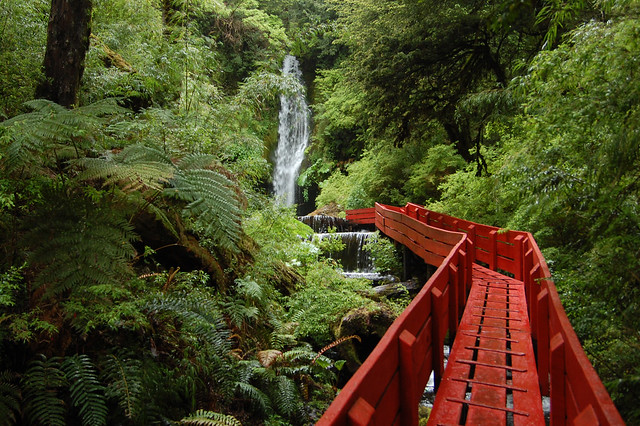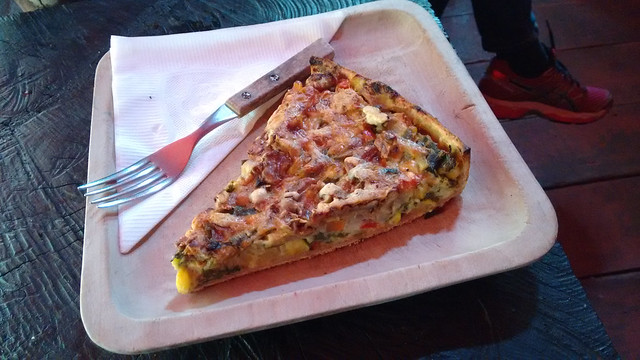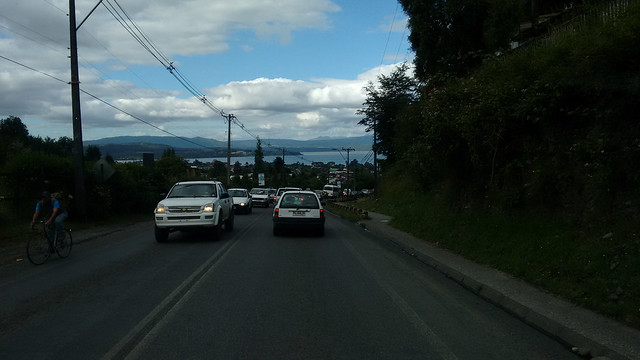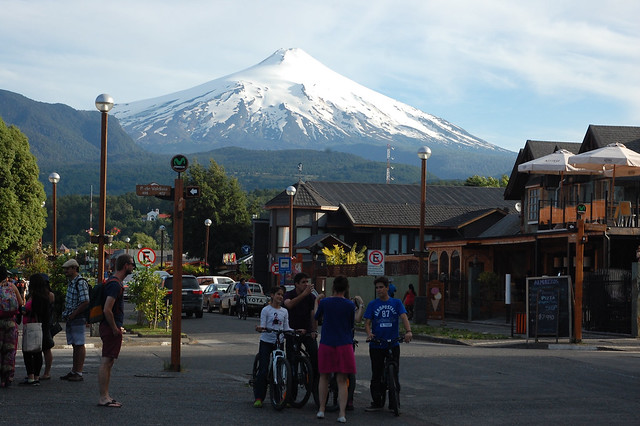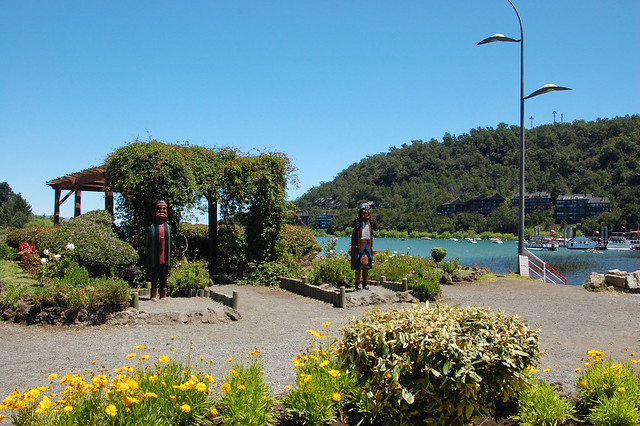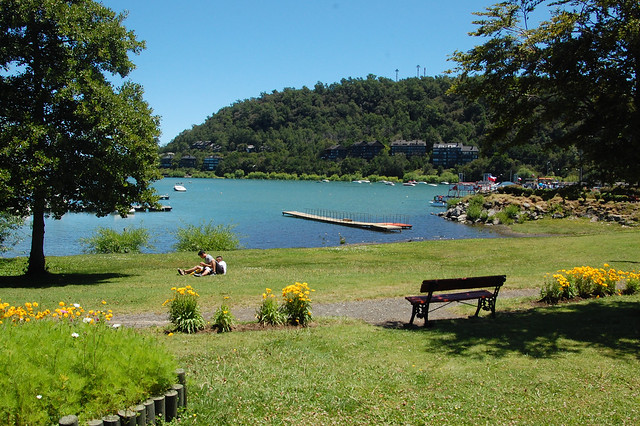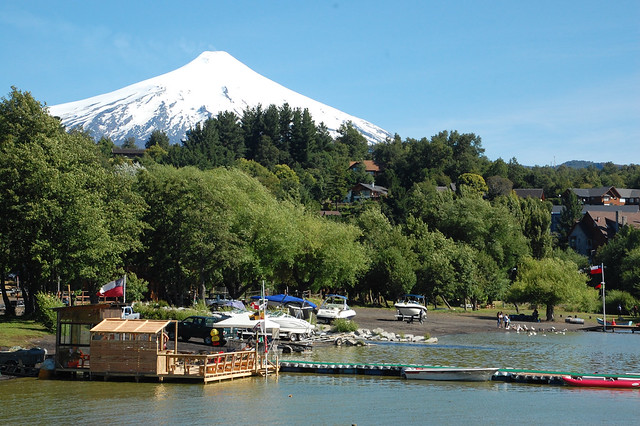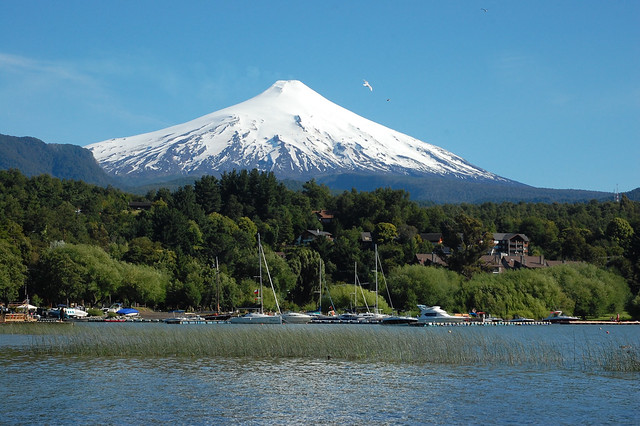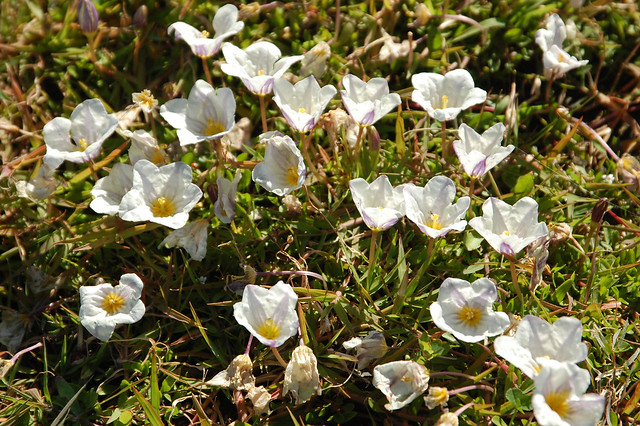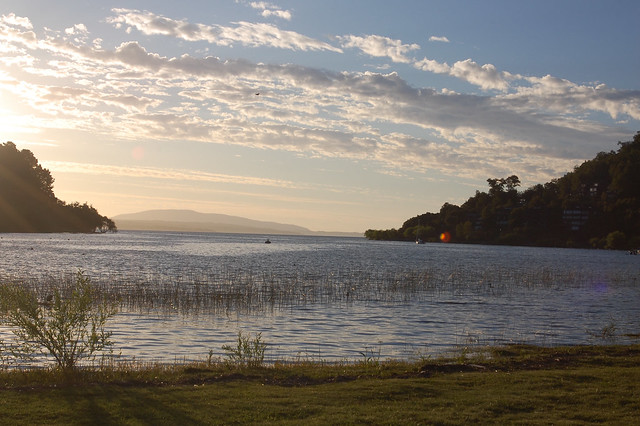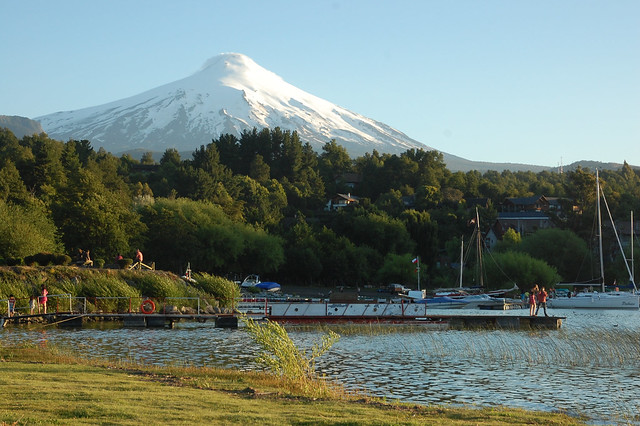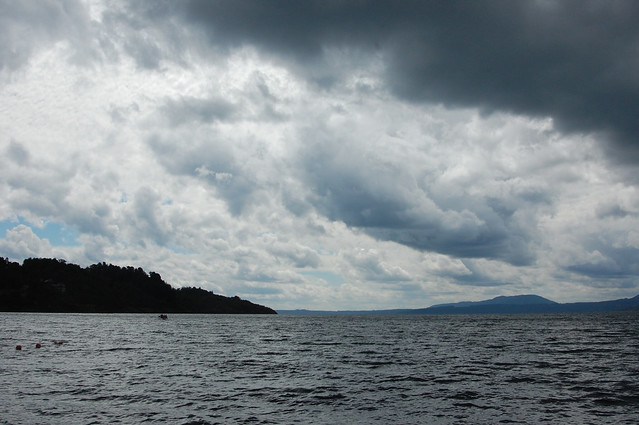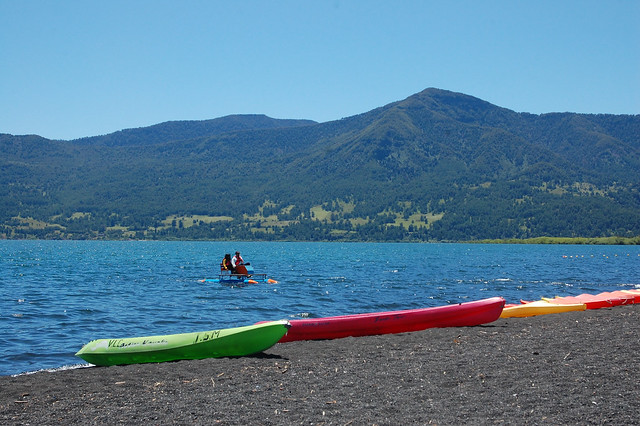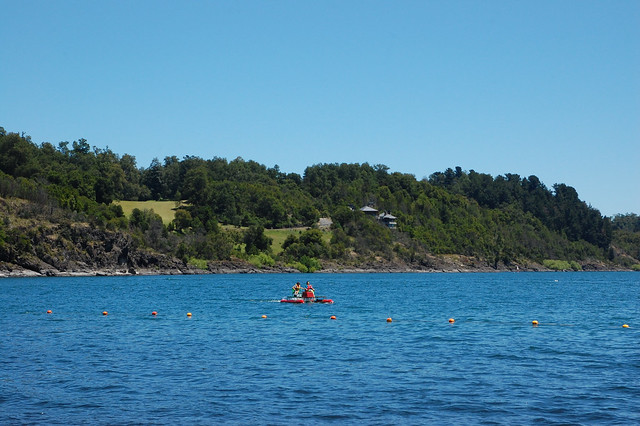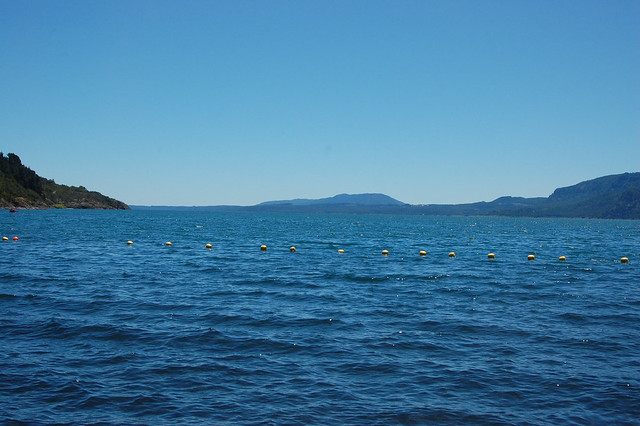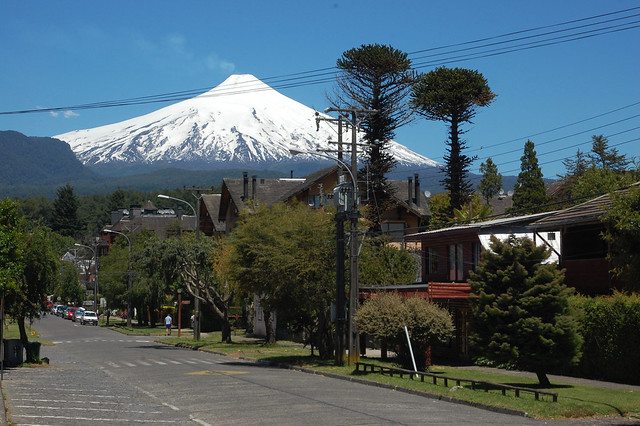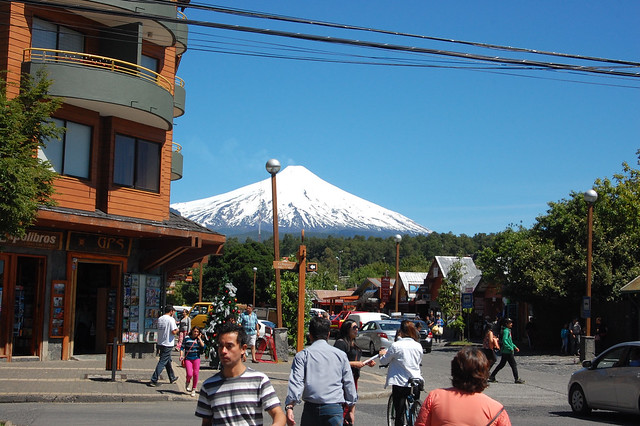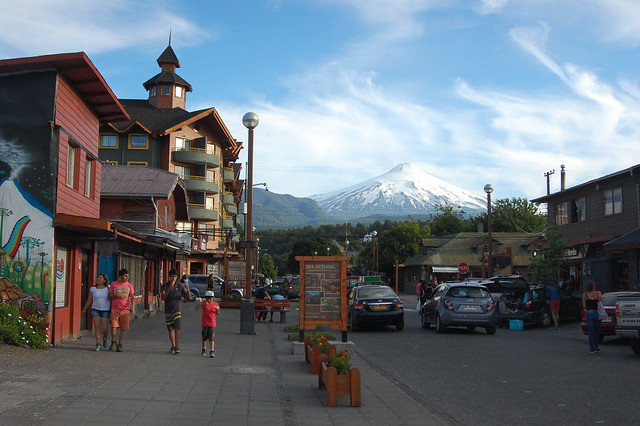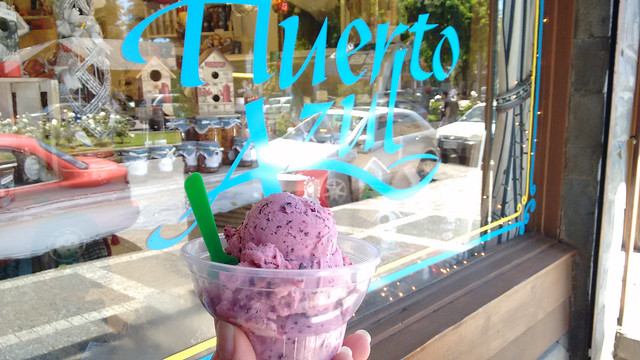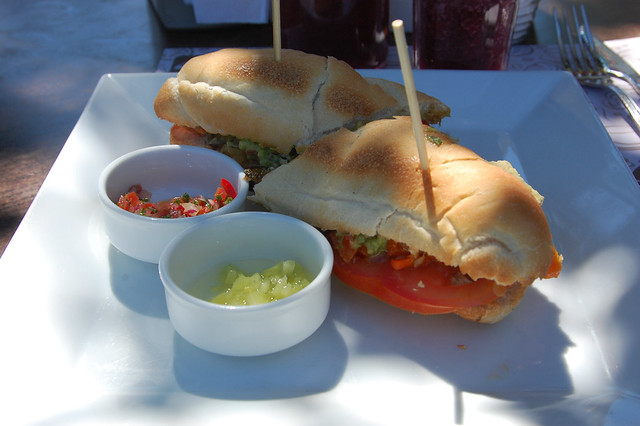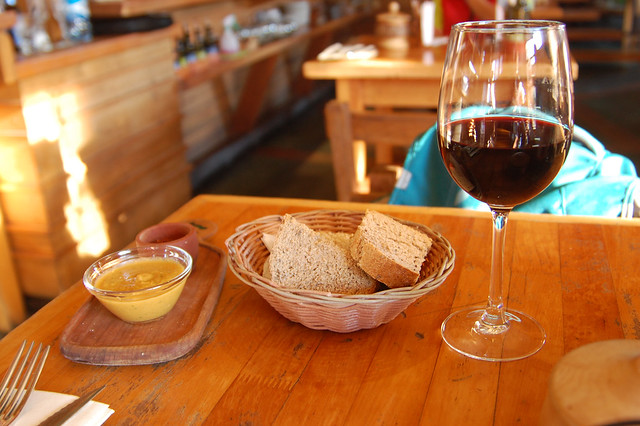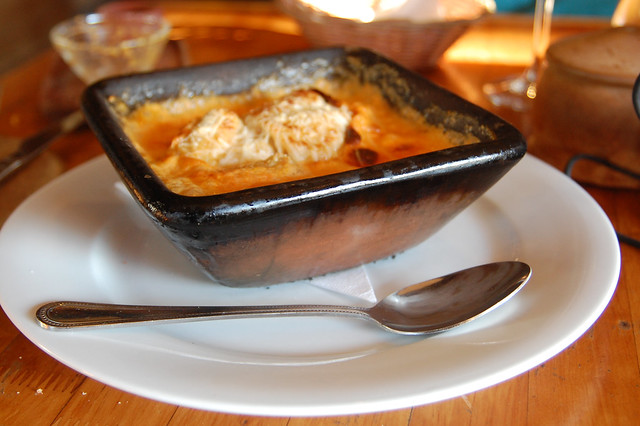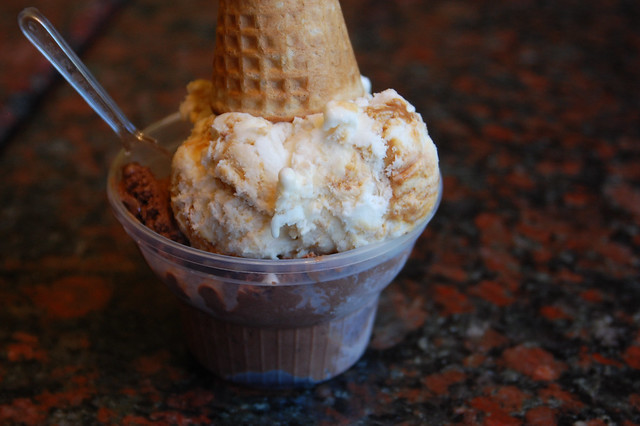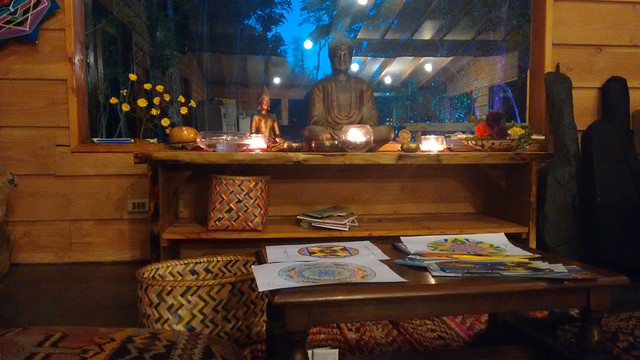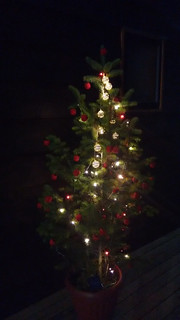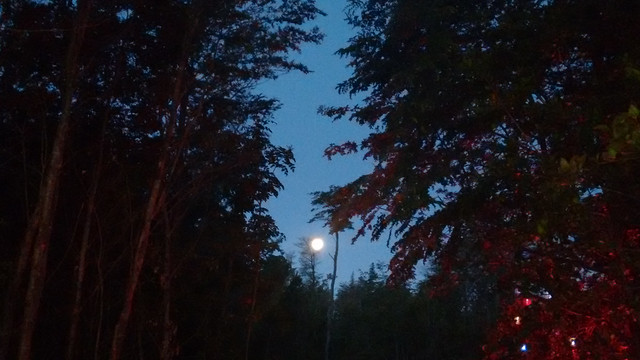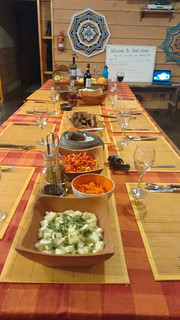
Fishing Boat in Ancud, Chiloé, Chile
Current Situation in Chiloé
As I write this post, the island of Chiloé is in the midst of an ecological crisis. Chiloé is an archipelago of islands located off the coast of Chile, separated from the mainland by a relatively thin strait, the Canal Chacao. Chiloé is connected to the rest of Chile by ferries that cross the canal at surprisingly slow speeds. Its main industries are agriculture and fishing, both commercial and artisanal, with a slow but steady increase in tourist interest in the islands. This means that the vast majority of the people of Chiloé live off the land and the sea. Chiloé is not a rich island, and due to the low minimum wages in Chile, its residents only just manage to eke out a living. (For reference, minimum wage in Chile is currently $250000CLP per month, or about $365 USD.)
Right now, Chiloé is suffering because of the red tide, or marea roja, an unpredictable “bloom” of red algae that can kill fish, shellfish, birds,and other ocean life and cause illness in humans. (Sources: 1, 2.) This year, the algae outbreak is especially high, basically bringing Chiloé’s main industry to a complete halt. The Chilotes (the people of Chiloé) say that this particularly high bloom may have been caused by dumping of antibiotic-laded dead salmon into the ocean waters relatively near Ancud, although El Niño also plays a factor. (Information in English here, here, and here. The last link especially explains the distrust of the government and the salmon industry.)

Mural in Ancud: Nuestra isla no se vende se defiende – “Our island is not for sale, we must defend it”
Because of the prohibition on fishing due to potential illness, the island of Chiloé is suffering a major financial crisis. The government initially offered $100000CLP, or about $150 USD, per family to help them get through the crisis, a low amount which caused outrage among Chilotes. Protests have escalated throughout the region – fishermen blocked the major highways leading to Chiloé, isolating the island from the mainland; meanwhile, additional solidarity protests have occurred throughout the country. As a result, the Chilean government is working towards a solution, increasing the amount of financial support provided to families affected by the fishing ban, as well as appointing a new regional coordinator, who has signed agreements with different comunas (or counties) of Chiloé to end the roadblocks and protests.
This situation is much more complex than I understand or can state here. There are rumors of secret deals with the salmon fishing industry; there is a history of government neglect of the island of Chiloé for generations. But everything that is happening now is in line with what I was told by the Chilotes themselves during my visit back in January. Geographically and financially isolated from mainland Chile, Chilotes have developed their own culture and their own way of life. As this article states, Chiloé is not a financial powerhouse, but its culture factors strongly in how the Chilean nation sees itself.
The people of Chiloé dream of an improved quality of life for themselves and especially their children, They want to earn a more sustainable living wage. They want support from their government to connect it with the mainland; they want the much promised bridge over the canal rather than an expensive, slow ferry. And to an outsider like myself, that’s the root of the protests: Chiloé matters. The Chilotes matter. And what happens to the ocean surrounding the archipelago absolutely matters too.
I visited Chiloé because of the picture that was always painted for me in guidebooks, when talking to Chileans from other regions, and in photo essays online. Chiloé is a mystical island which is almost a world apart from the rest of Chile, with its own unique culture and history. After my short visit, I definitely deepened my understanding of the region, but I only scratched the surface of the island’s unique character.
I hope my next few posts encourage you to visit the region, which needs visitors investing their money into tourism, especially if the fishing industry remains paralyzed for a while. My trip to Chiloé started in Ancud, the fishing port and and first major city on the Isla Grande de Chiloé.
Fair warning: This post is LONG and filled with photos! I wanted to do Ancud justice – most people only pass through briefly en route to the penguin colony in Puñihuil or on their way to Castro. Ancud is awesome and my goal with this post is to encourage you to spend more time there!
Crossing the Canal Chacao

Ferry Crossing on the Canal Chacao Between Puerto Montt and Chiloé
As I’ve mentioned in other posts, visiting Chiloé was a travel dream come true. After thoroughly enjoying my explorations around Pucón and Puerto Varas, I was excited to get on the ferry to cross over to the island of Chiloé on January 1, just a few short months ago.
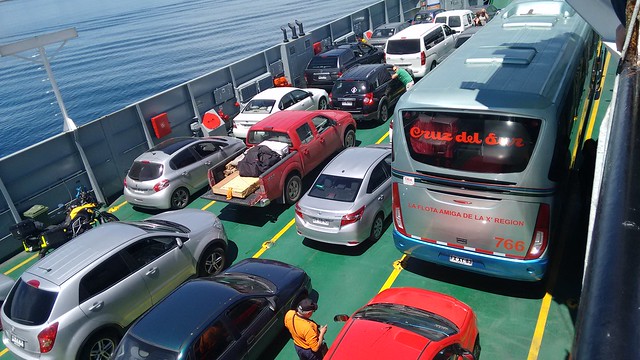
Cars on the Ferry to Ancud from Puerto Montt
After celebrating New Year’s Eve until the wee hours with an international cast of characters from the hostel in Puerto Varas, my new friend Marilene and I boarded our bus to Chiloé, sneaking moments to sleep when we could. When the bus boarded the ferry, we all filed off the bus and headed to the open air levels of the ferry to take a look at the views.

Chile’s Mountains as Seen from the Canal Chacao
Like my fellow tourists, I was excited to see the expanses of blue all around us. After so much bus travel, there is something special about crossing the Canal Chacao on a boat and being able to appreciate the snow-covered mountains and volcanoes off in the distance.

Seabirds over the Canal Chacao, near Chiloé
Besides the mountains, the marine life surrounds you as you cross the channel, with lots of seabirds following the fish…

Sea Lions in the Canal Chacao, near Chiloé
…and even sea lions making an appearance and swimming alongside the boat on my return trip a few days later. The trip on the ferry takes about 30 minutes, enough time to stretch your legs before boarding the bus once again for the trip to Ancud and the rest of the island.
Exploring Ancud
As I mentioned earlier, we arrived to Ancud on New Year’s Day, a national holiday, so the city was even quieter than usual. This gave me a chance to really take in Ancud’s atmosphere and laid back vibe. Although Ancud is a small city, the first thing I noticed upon arrival is how hilly it is, with colorful wooden houses built into gentle slopes. Perhaps this is why it seems to have a small town atmosphere, even during the busier work week.
The other thing I noticed is that Ancud is an incredibly walkable city, especially for tourists. Most of the hostales are located within a few blocks of the costanera, or beachfront walkway, and also within walking distance of the Cruz del Sur terminal in Ancud. (Cruz del Sur is the major bus company that serves the island of Chiloé and other parts of southern Chile.) For arriving visitors, this means that your first impression of Ancud probably will involve walking right towards the water.
Views of the Blue Ocean from Ancud, Chiloé
Arriving in Chiloé by bus, you end up right in the middle of the costanera, so you can either head to the center of town or to the beach. I was lucky to have very good weather for most of my time in Chiloé, which meant that the skies were a brilliant blue and the ocean almost equally as aquamarine along the coastline. For this reason, I was more than happy to walk along the costanera in the sunshine towards the center of Ancud.
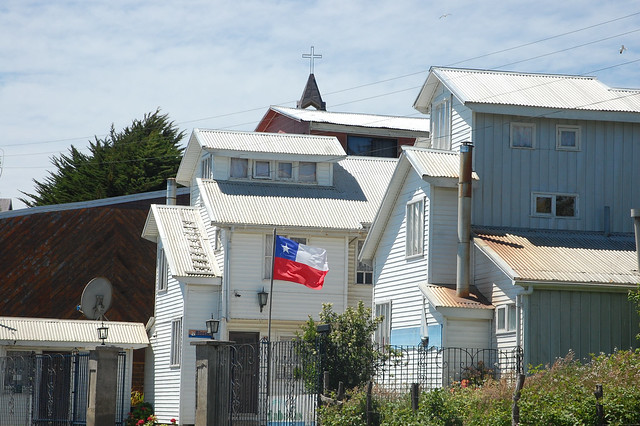
Wooden Houses and Chilean Flag in Ancud, Chiloé
While there are houses lining the costanera, like those pictured above, there is also a sense of openness, with the city located up on the hills instead of right on the water.
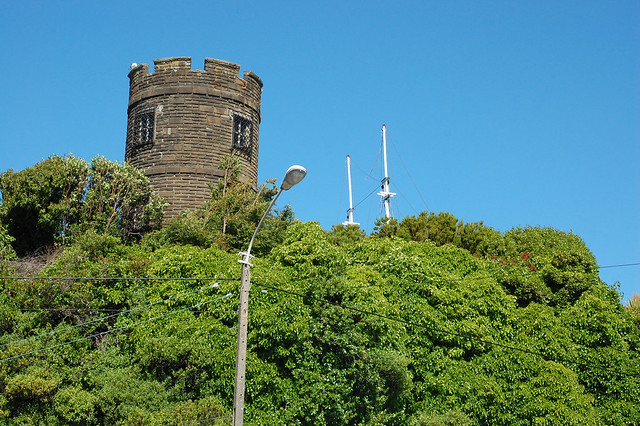
Museo Regional de Ancud Seen from the Costanera
Walking the costanera, you come across several different remnants of Ancud’s history as a Spanish stronghold a few centuries ago. There are a couple of forts you can visit in Ancud with great views over the water, as well as the tower you see above, now part of the Museo Regional de Ancud.
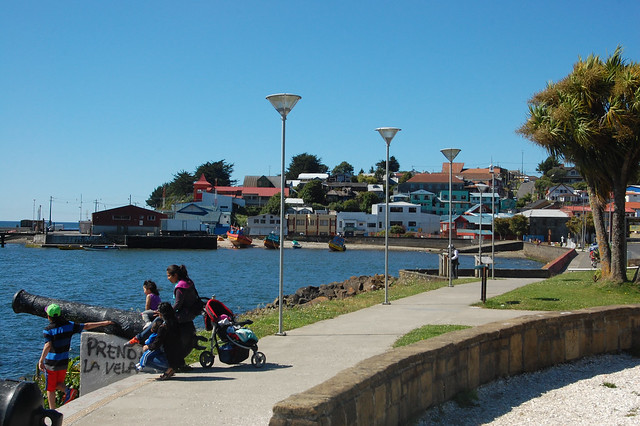
Cannon along the Costanera, Ancud, Chiloé
The costanera also hosts a monument to the battles of past eras, with these colonial cannons looking out over the water. Kids love to play on them, of course, just as I did so many years ago.
Commercial Center of Ancud
In most cities in South America, the Plaza de Armas is the best place to start wandering around a new city, exploring the side streets and seeing where you end up.
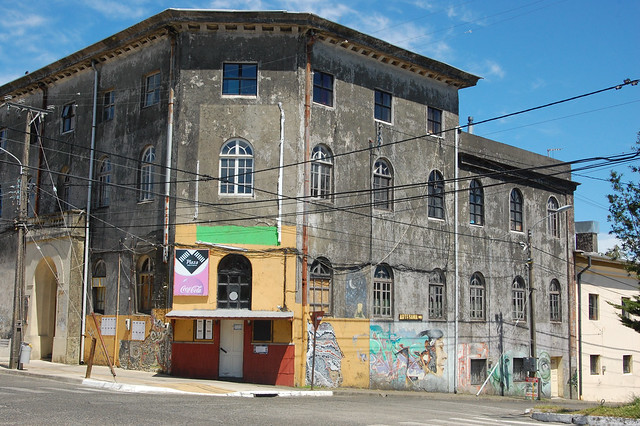
Building and Murals near Plaza de Armas, Ancud, Chiloé
As you walk around the center of town, the street art starts to catch your eye, more reminiscent of Valparaíso, another gritty port city. (Below, I have some photos of impressive murals with their deeper, socially conscious meanings.)
Chiloé is also famous for its wooden churches, but Ancud’s cathedral was actually destroyed in a 1960 earthquake. The cathedral located across from the Plaza de Armas is a reconstruction, and as such it lacks the character of the wooden churches around the island. (This is what the old cathedral looked like.)

Other View of the Plaza, Looking Towards Calle Pudeto
It’s hard to describe the appeal of Ancud, but I hope these photos capture it. I think the reason I liked Ancud so much is that it just exists; it’s a city where people go about their business and their lives.
The buildings are brightly colored and interesting, many of them reconstructions after the 1960 earthquake. They are unpretentious, yet still have character and uniqueness.
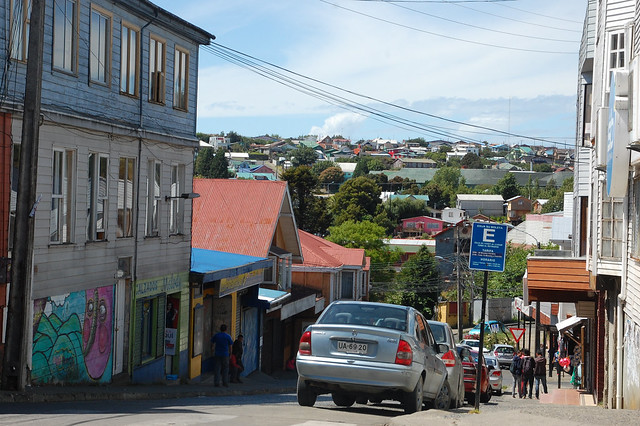
Calle Pedro Montt in Ancud, Chiloé
Walking through the streets also gives you a great perspective on how residential the city is, with houses stretching out over the green hills of the region.
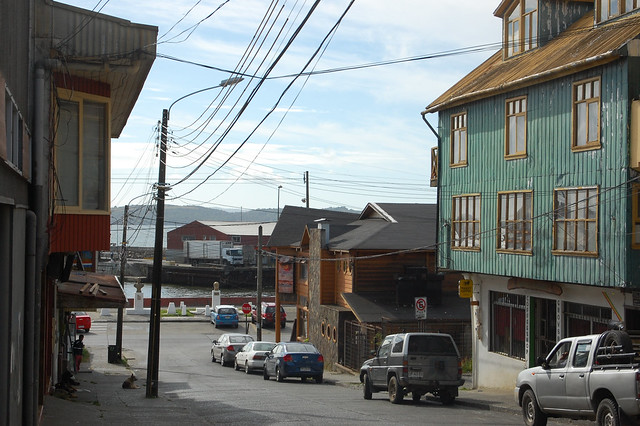
Views of Ancud, Heading Towards the Port from the Center of Town
It’s possible to spend hours wandering through the streets of Ancud looking at all the small family owned and operated businesses all around the city, stopping in to small restaurants and bakeries to try the food from Chiloé.
Back to the Beach
Because Chiloé is actually known for its rainy weather and misty clouds almost always surrounding the archipelago, when the blue skies come out it is definitely time to head to the beach and take advantage of the sun. There are actually two areas with beachfront in Ancud; one located closer to the edge of the peninsula north of town near the Costanera Norte, and another located on the way out of town towards Puñihuil, closer to the bus station. That’s where we headed.
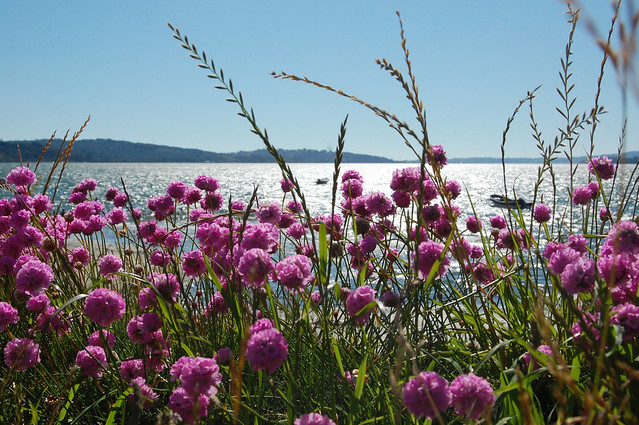
Colorful Flowers by the Water in Ancud, Chiloé
With such bright sun, the reflections off the water were almost blinding, which led me to take some fun pictures, trying to remember this beautiful day.
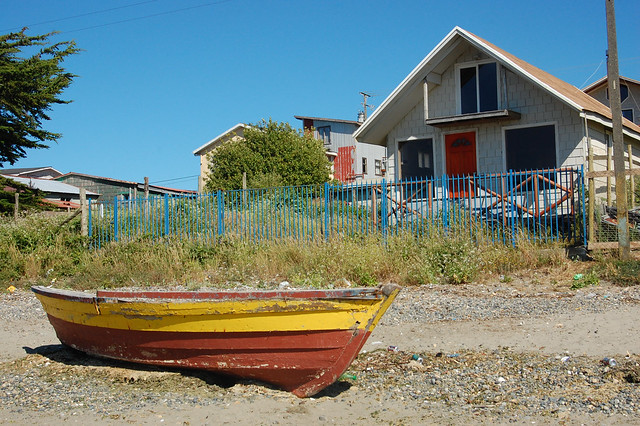
Fishing Boat on the Beach in Ancud, Chiloé
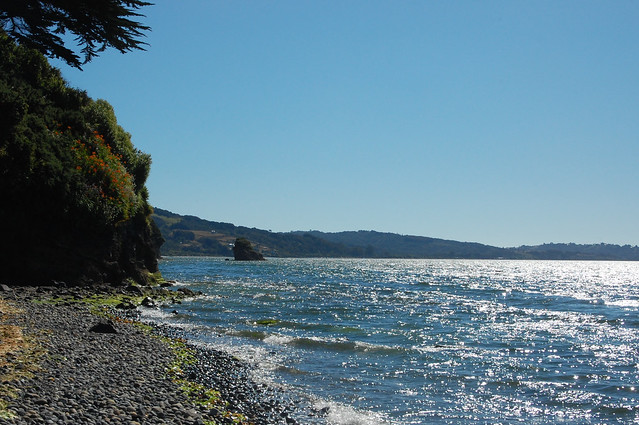
Pretty Oceanside Views in Ancud, Chiloé
This would be a good place to bring a book and blanket and just enjoy the sound of the water, a little ways outside the noise and hustle of the city.
Walking further away from the main part of the beach enables you to get a good view of the colorful houses of Ancud all along the costanera.
Summer Reflections on the Sea in Ancud, Chiloé
Yes, there’s something special about being on the water in Chiloé, a feeling that was heightened when I visited the beach in Cucao.
Street Art in Ancud
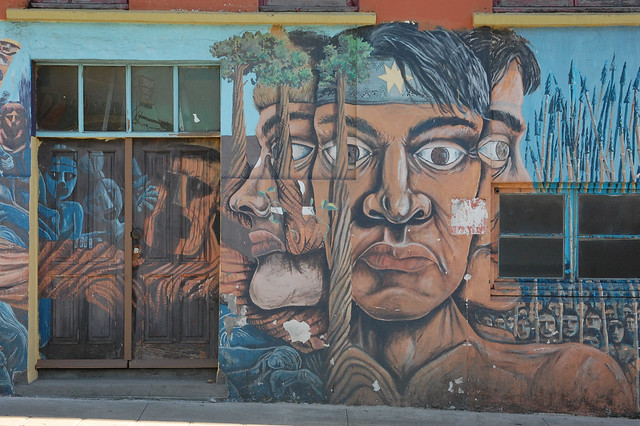
Mural on Calle Pudeto, Ancud, Chiloé
As mentioned above, the murals on the streets of Ancud are a good way to get a sense of the Chilote mentality and the island’s the regional identity and pride. This mural seems to reflect the Mapuche strength of spirit and resistance. (Click here to see the whole mural on Google Maps.)
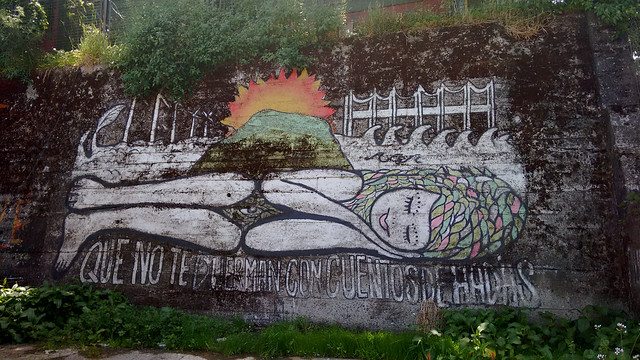
“Que no te duerman con cuentos de hadas” – Don’t them put you to sleep with fairytales
This mural indicates the mystical, mythical intrigue around Chiloé, where people still believe in legends involving creatures and spirits that need to be respected and appeased. (Interesting article on NPR here.) There is so much to learn about this side of Chiloé that I bought a couple of short, locally published books on the subject!
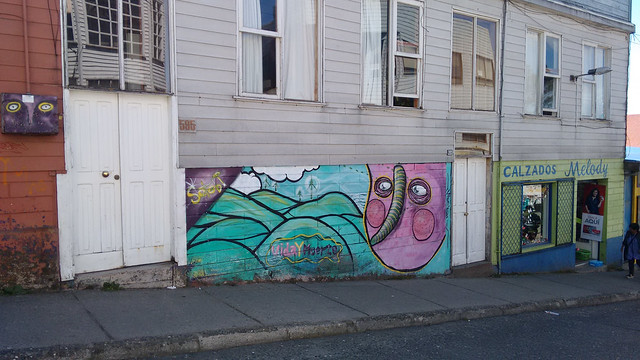
Street Art on Calle Pedro Montt in Ancud, Chiloé – “Life and Death”
I think this mural represents the rolling green hills of Chiloé, which are the main source of survival for so many Chilotes who live in the rural areas of the island.
And this one seems to represent the connection with the ocean, with the fishing boats off to the side, a mermaid, perhaps a spirit, and the houses that line the waterfront as well as the trees all over the island.
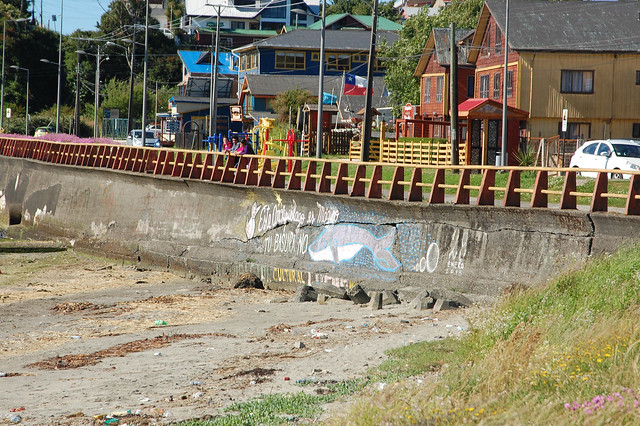
Mural by the Beach in Ancud, Chiloé: “Este archipélago es mágico, tu basura no” – This archipelago is magical, but your trash isn’t
Finally, this mural by the beach reminds people not to throw their garbage into the area by the beach, as this will just be carried out to the sea, contaminating the waters that give the islands their magic and life. Pretty fitting considering the current crisis faced by the island.
Museums in Ancud
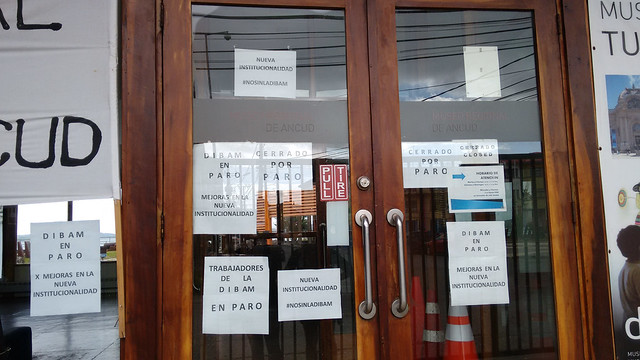
Museo Regional in Ancud, Chiloé, Closed for Strike
Ancud is home to two important museums that help explain the history of Chiloé. Unfortunately for me, the Museo Regional was closed on my visit due to a strike, but definitely seems worth checking out. The museum houses a reconstruction of an important ship, the Goleta Ancud, as well as a giant whale skeleton. (If you do make it to the museum, let me know how your visit went!)

Centro de Visitantes de Iglesias de Chiloé, Ancud, Chiloé
Thankfully, the Centro de Visitantes de Iglesias de Chiloé was still open. This visitors’ center should be a required first stop for anyone interested in learning more about the wooden churches all around Chiloé, which are protected on UNESCO’s World Heritage List.
The Centro de Visitantes is housed in a former convent, the Ex-Convento de la Inmaculada Concepción de Ancud. This building also functioned as the cathedral while the current one was being built.
When you visit, make sure to get a guided tour, as this really helps clarify the different techniques used to make the wooden churches.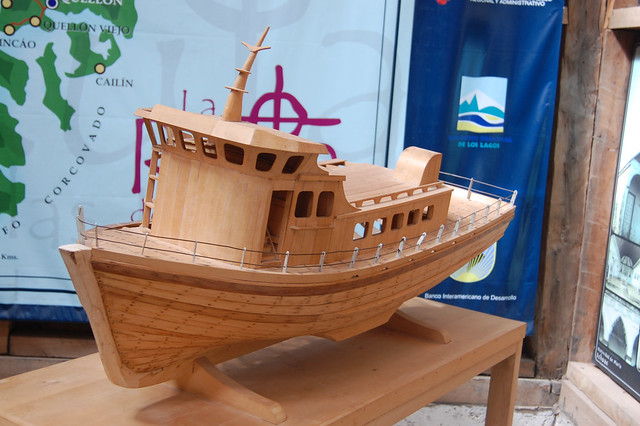
Basically, the wooden churches were constructed using ship-building techniques. Even if you’re not so interested in churches, it’s pretty interesting to hear all the different types of wood that were used, learn about the different ways to join wood together without nails, and see the many models of the churches around the island, some located in more distant, isolated parts of Chiloé.
Model of the Cathedral in Castro, Chiloé at the Centro de Visitantes de Iglesias de Chiloé
Knowing that I was not going to have the time nor transportation to get everywhere on the island, I appreciated checking out the models and being able to compare their different types of construction. This is definitely a required first stop for anyone planning to visit the wooden churches of Chiloé.
Food and Lodging in Ancud
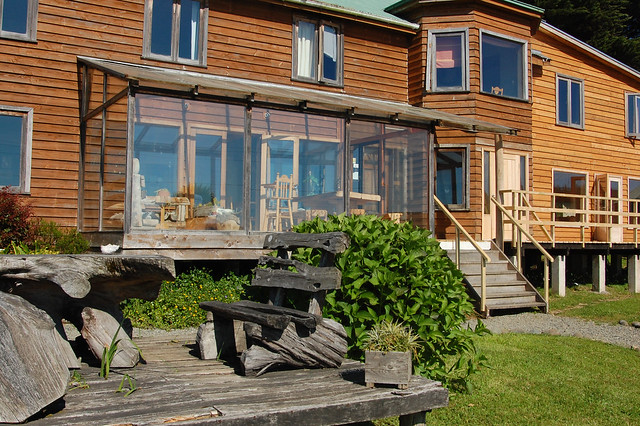
Hostal Nuevo Mundo in Ancud, Chiloé
Although the bigger, slightly more cosmopolitan city of Castro gets a lot of the tourist traffic, Ancud is actually a really pleasant place to stay. Most of the hostales catering to foreign and budget travelers are located over by the quieter part of the costanera, including Hostal Nuevo Mundo. Hostal Nuevo Mundo has dorms and private rooms, many of them with views over the water, and they also have hot tubs for rent, perfect for those cold Chiloé nights. My friend Marilene stayed at 13 Lunas and absolutely loved it – it seemed to be more friendly and upbeat, and also has great views as it’s at the top of a hill.
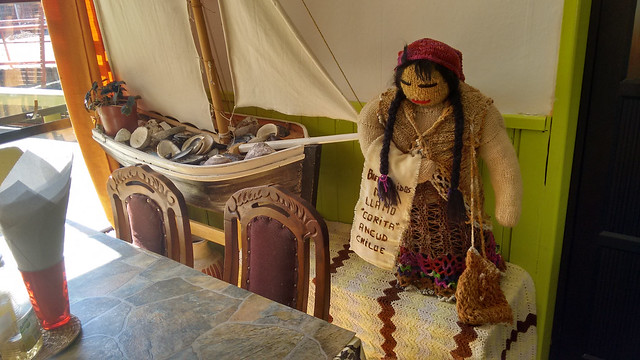
Restaurant Corita, Ancud, Chiloé
In terms of food, Ancud is known for its giant empanadas, bigger than anywhere else in Chile. On New Year’s Day, the only place open was Restaurant Corita, a charming restaurant with typical cooking from the island. Of course, they had a ton of seafood options, but they also had giant salads to eat with the empanadas. Portions are huge and service is excellent.
Freshly Brewed Tea at Café Bar Nerudiano in Ancud, Chiloé
On my second day in Ancud, I decided to try out Café Bar Nerudiano, a cute café located on the second floor of a shopping gallery, which turns into a bar in the evenings. The space is illuminated by big windows that provide views over downtown Ancud and there is a balcony with seating outside. They served many types of loose leaf tea, and even have jars for you to sniff them. This was probably one of the best places I had tea in all of Chile, even though Chileans are pros at tea. Look at that infuser AND more hot water on the side.
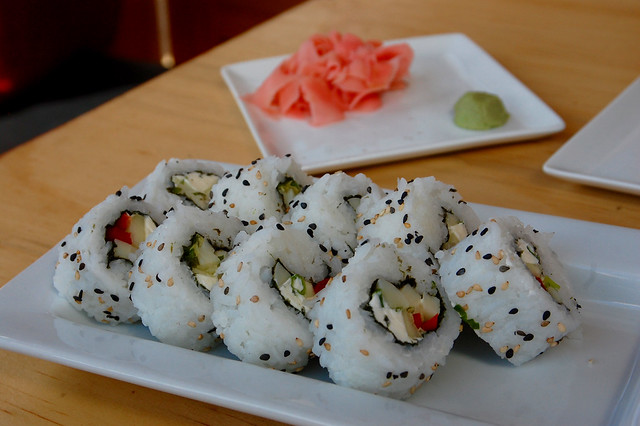
Vegetarian Sushi at Café Bar Nerudiano, Ancud, Chiloé
They also serve sushi, including the delicious and filling vegetarian sushi. It definitely struck me as a hangout for young, artistic types – everyone who stopped by seemed to know each other.
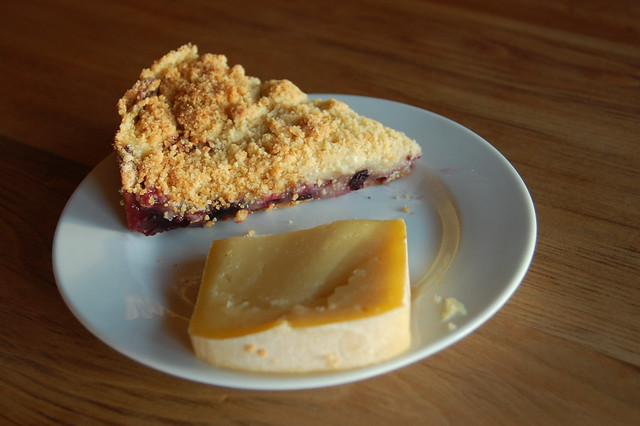
Kuchen de arándano (Blueberry Cake) and Fresh Cheese from Ancud, Chiloé
Of course, when I travel, I like to buy food at the markets. I picked up some Chiloé-style cheese from the Mercado Municipal in the center of town – the best part is that I was able to sample several kinds to figure out which flavor I liked best. I also finally decided to stop in to a local bakery and buy a slice of kuchen, the fruit cake popular in southern Chile. I opted for the kind with sugar crumble on top and filled with blueberries. I was pleasantly surprised at how delicious it was; I don’t usually like fruit in my desserts, but the subtle sweetness actually enhanced the berries. Don’t be like me – eat more kuchen earlier in your travels. 😉
Sunset in Ancud, Chiloé

Costanera in the Afternoon Sun
One of the reasons I stayed in the hostel right on the water in Ancud was to have easy access to the waterfront during the sunset! Part of Chiloé’s magic comes from the clouds rolling in over the water as the temperatures change from day to night and night to day.
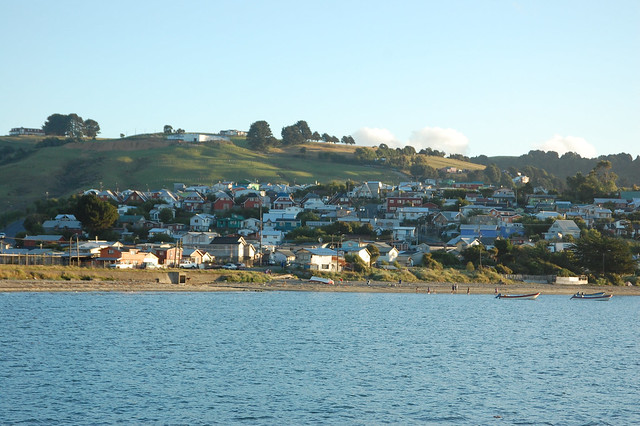
Late Afternoon Sun over the Hills of Chiloé, Ancud
The late afternoon sun illuminated the hillside of Chiloé, making the colorful houses stand out of the landscape like a pastoral painting.
And as if on cue, the clouds rolled in over the horizon, guaranteeing a fascinating sunset.
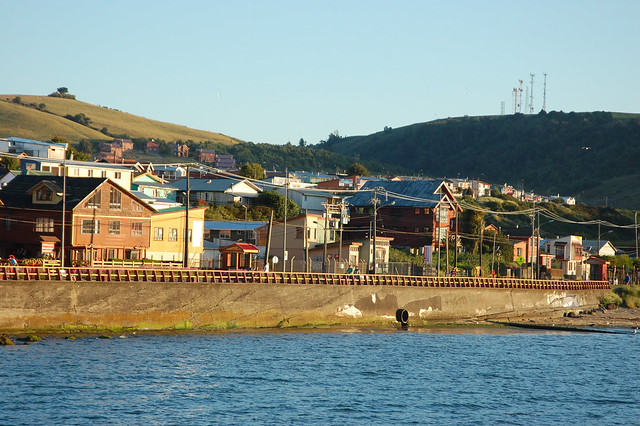
Costanera Illuminated by the Afternoon Sun in Ancud, Chiloé
This photo gives a good sense of the length of the costanera – a great place to walk or bike, with many people strolling together and watching the sunset.
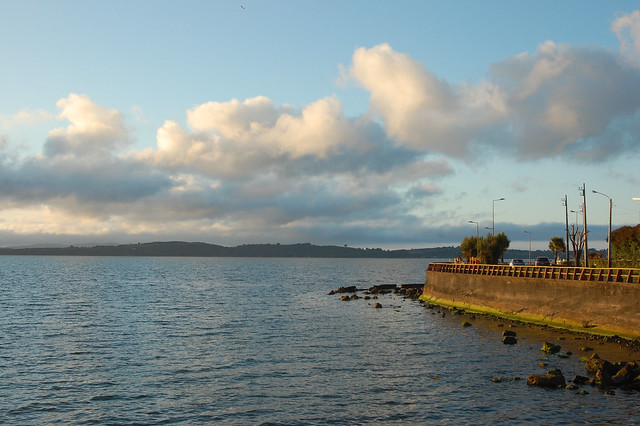
Costanera in the Sunset, Ancud, Chiloé
Colors Changing over the Horizon, Ancud, Chiloé
Sunlit Clouds in Ancud, Chiloé
As I watched the skies change, I definitely began to understand the mystique of Chiloé.
More Sunset Shots from Ancud, Chiloé
What can I say, I love a good sunset, and I made sure to go back and watch the next night. The clouds were in a slightly different formation, but still just as beautiful. Staying in Ancud was an excellent choice for classic sunset shots.
As you can see, Ancud is an appealing city; for me, its low-key vibe provided a perfect introduction to the island of Chiloé. While many visitors head straight to Castro, I recommend spending more time in Ancud and exploring the northern part of the Isla Grande de Chiloé, including the nearby penguin colonies at Puñihuil, subject of my next post!
Recommendations for Ancud, Chiloé, Chile:
- While the town of Chacao is the entry point to the Isla Grande de Chiloé, most visitors first experience Chiloé in Ancud, the major city at the northern part of the island.
- Cruz del Sur is the bus company dominating travel around southern Chile and Chiloé, and also owns the ferries crossing Canal Chacao. The bus stops at the Terminal Municipal on the outskirts of Ancud, where you can transfer to buses to other smaller towns in Chiloé. If you are going to Ancud, stay on the bus until you get to the Cruz del Sur terminal in Ancud proper. Most hostels are located near this terminal, making it easy to walk to them.
- I stayed at Hostal Nuevo Mundo due to its location right on the water, and thought it was a pleasant enough hostel, although not particularly friendly. They had a lovely breakfast and great views from the greenhouse-like porch. My travel buddy stayed at nearby 13 Lunas, and she raved about its social atmosphere and views from the balcony.
- If you like Ancud’s vibe, you may want to consider basing your explorations of Chiloé from there. We ran into travelers visiting Cucao from Ancud on a day trip. I much preferred Ancud to Castro and wished I had just stayed in Ancud, exploring Castro on a day trip.
- I definitely recommend eating at Restaurant Corita and Café Bar Nerudiano. There are a number of other cute restaurants around the area. If you eat seafood, you should definitely try curanto, Chiloé’s classic meal, in Ancud. Great article on the experience here.
- Make sure to check out the Mercado Municipal Ancud, located on Av. Libertad between Calle Dieciocho and Calle Arturo Prat. Here, you can find seafood, cheese, and other food products, and many stands with handmade wool items and other souvenirs. This is where I bought my books on the myths of Chiloé and booked my tour to Puñihuil.
- Make sure to visit the Plaza de Armas to see the new cathedral. You should also visit the Museo Regional, at Libertad 370, right off the Plaza de Armas. Entry is free. There are a few souvenir and artisanal shops located around the Plaza de Armas.
- Visiting the Centro de Visitantes de Iglesias de Chiloé is a must to get a sense for the architecture of the unique churches, even if you’re not a big fan of churches in general. You can find the Visitor’s Center at Federico Errazuriz 227. They also have an on-site café and a small shop where you can buy cool posters of the churches. You can read more about the churches in UNESCO’s write-up.
- Although I didn’t get to see it, the Fuerte San Antonio (old fort) located in the northern part of Ancud seems to be pretty cool. Wikitravel has a nice list of more things to do in Ancud.
- If you’re interested in learning more about the mythology of Chiloé, this NPR article is a good place to start. If you read Spanish, there are a number of websites documenting the stories told about the island (just do a Google search for “mitos y leyendas de Chiloé”). This is a nice explanation of the cultural history of Chiloé.
- If you visit Chiloé, make an effort to understand its culture and history. This is a rural area where the main industries are farming and fishing, and life moves slower here. That’s part of the appeal; if you want a lively city, try Puerto Montt and Puerto Varas!

